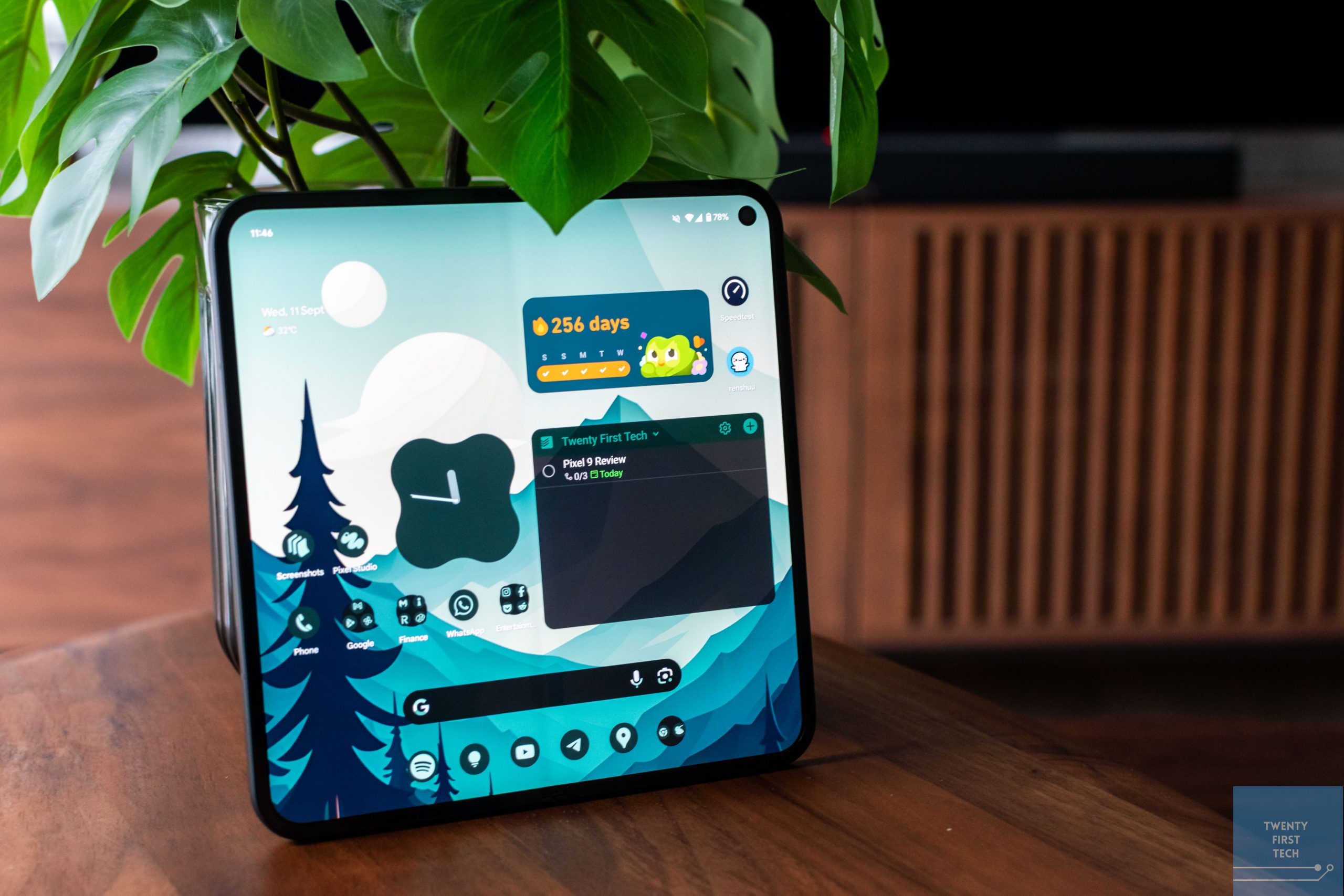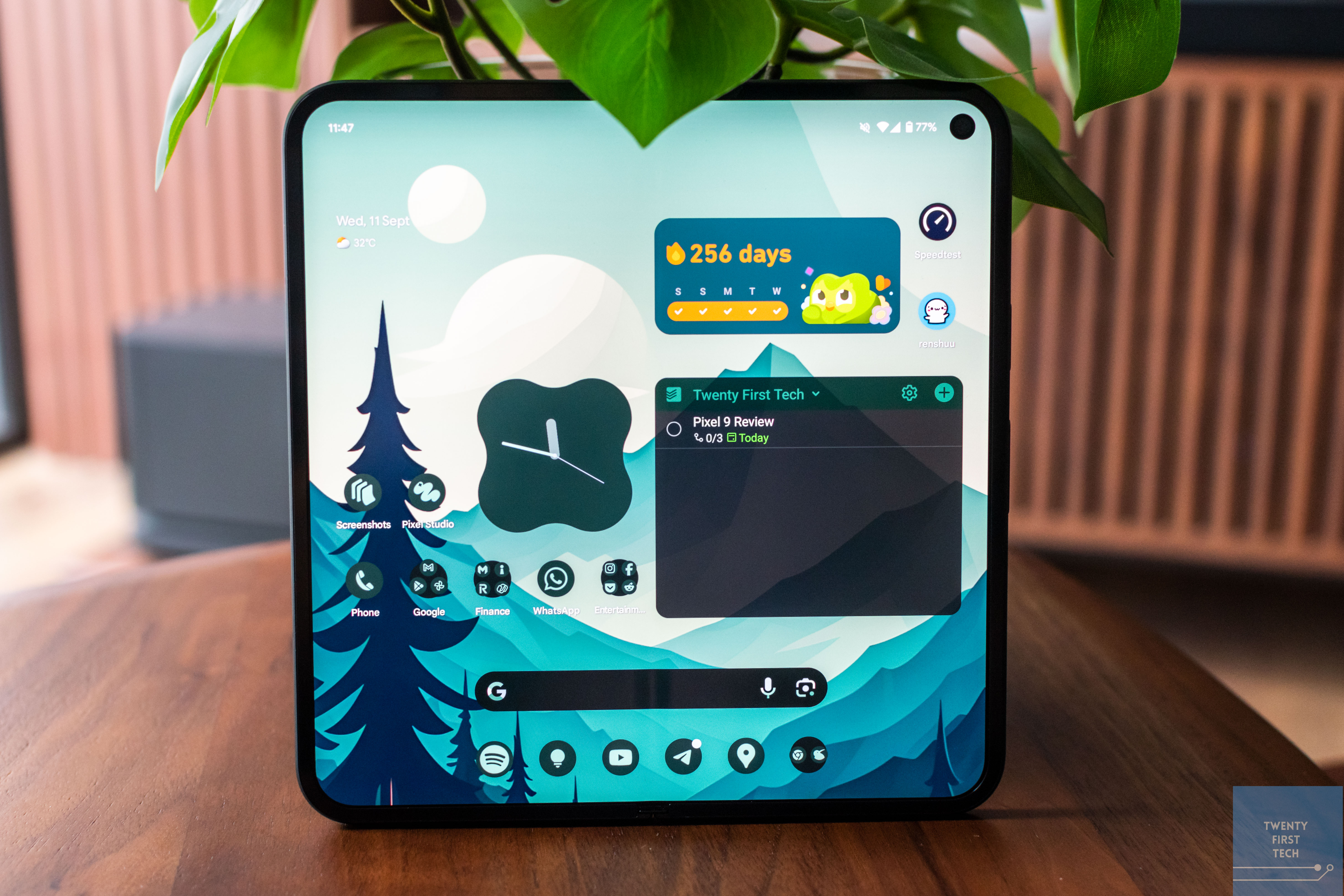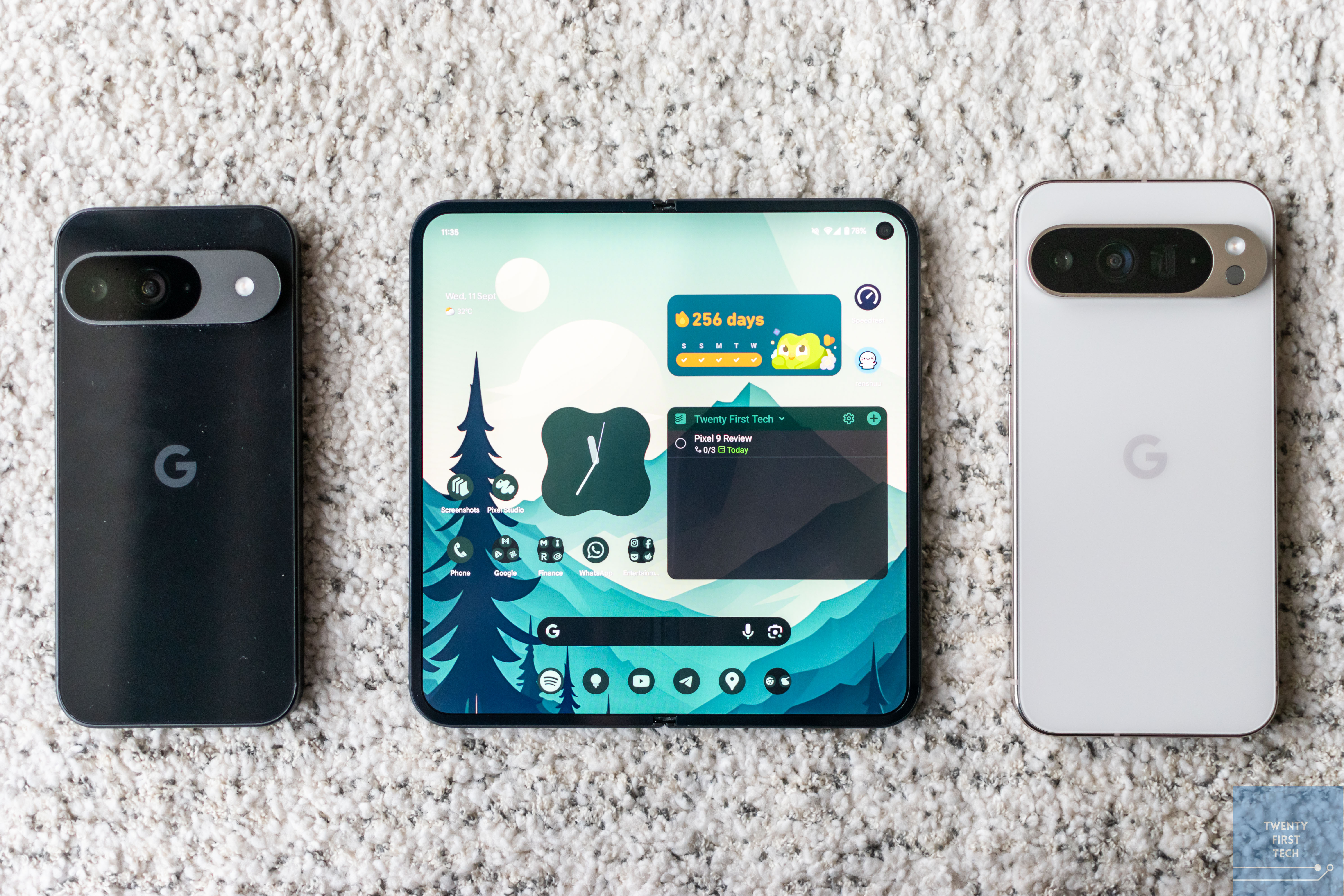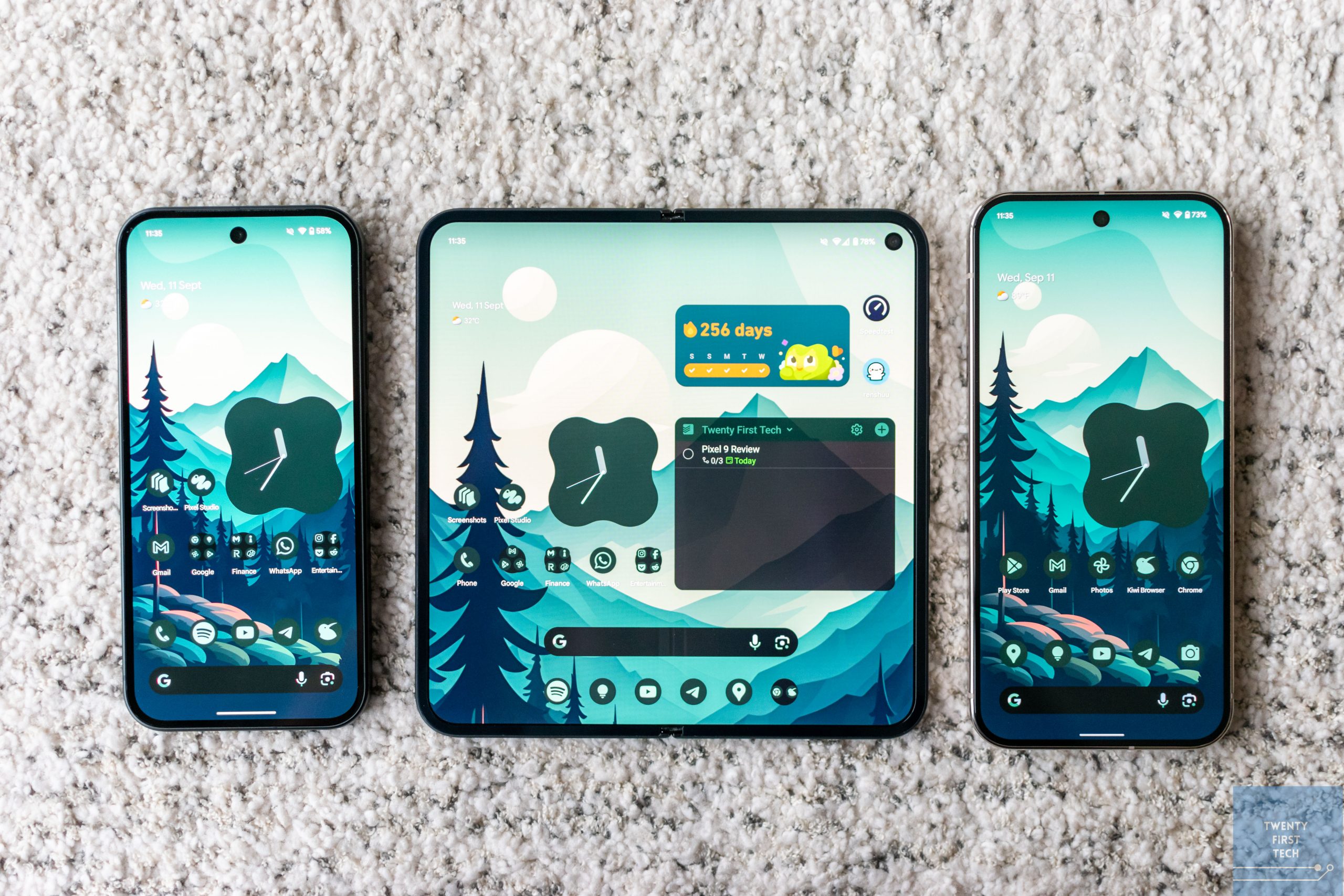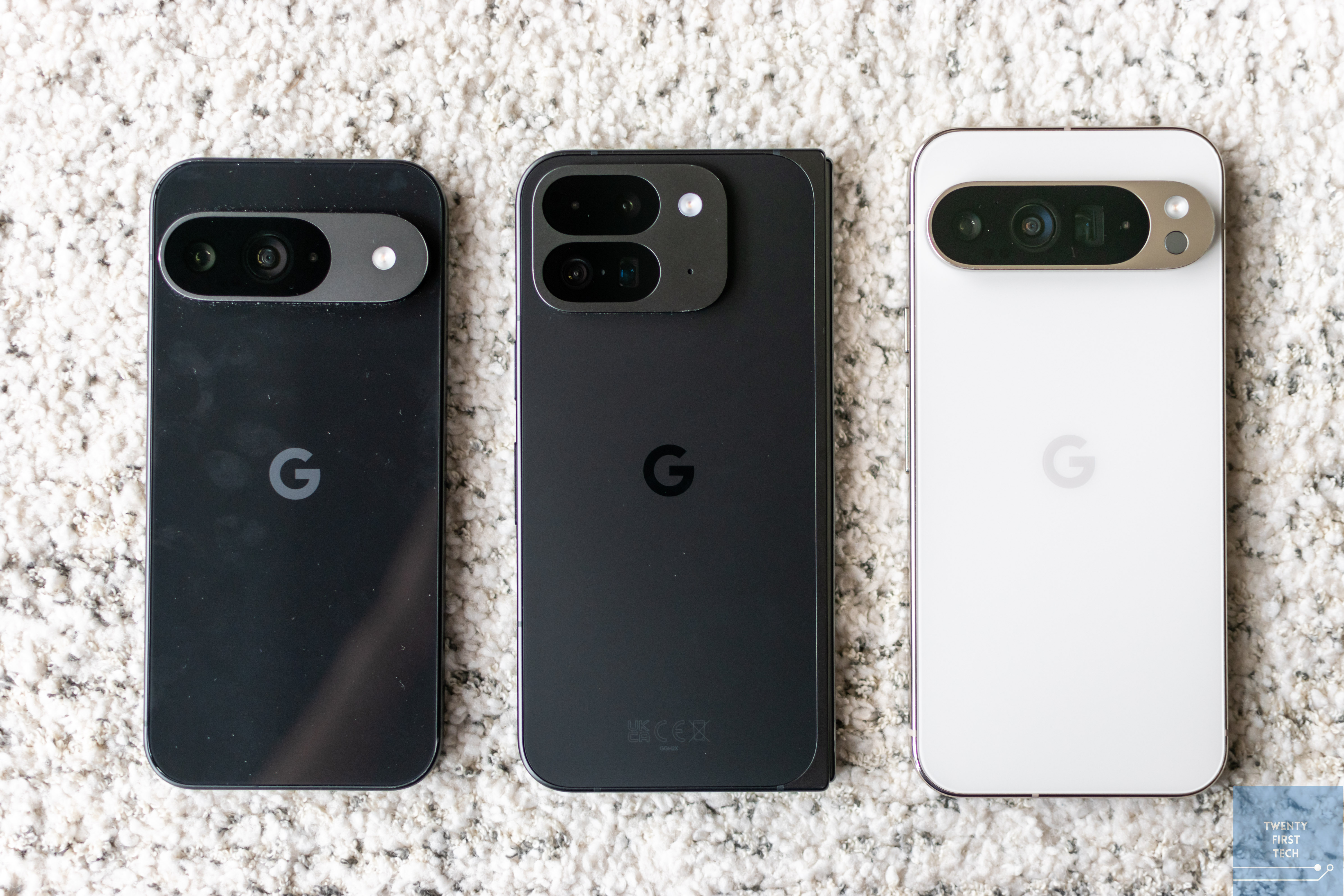Unless the Pixel 9 Pro Fold completely wins me over, I will very likely be buying a Pixel 9 Pro for myself and my wife.
2 days after I moved my SIM card over from the Pixel 9 review unit into the Pixel 9 Pro Fold, I messaged my colleague, “I lowkey want this phone??”
5 days after sending that message, I found myself entering my credit card details to put down S$2,399 for the Pixel 9 Pro Fold on the Google Store.
I surprised even myself. After years of waiting for a compact flagship, Google finally delivered with the Pixel 9 Pro. I was so sure that the 9 Pro was the phone I was going to get to replace my dying Pixel 5. But instead of getting the most compact flagship, I forked out the extra cash for the bulkiest and heaviest flagship available from Google.
Why? Mostly because it was the last day of a promotion on the Singaporean Google Store which gives you S$899 Google Store credit with every Pixel 9 Pro Fold purchase, making the effective price of the phone S$1,500. Also, the Pixel 9 Pro Fold was backordered and would only arrive 1 month later, so I figured if I regret my purchase I could just cancel the order before it ships and get a refund.
But if I do end up going through with it, the S$899 credit would be used to offset the Pixel 9 Pro that I would eventually buy for my wife. Presuming that Google runs another pre-order promo for the Pixel 9 Pro, I’d get even more store credit, which I’ll probably cash out by buying and reselling a Pixel Watch 3. Not a bad deal.
But I also pulled the trigger because damn it, I really like this phone. And beyond a few minor annoyances, my past few weeks with the Pixel 9 Pro Fold has convinced me that foldables are a genuinely useful form factor that might just justify their high asking price.
This is a review of the Pixel 9 Pro Fold, but really it’s also a means of figuring out if my somewhat impulsive purchase of this phone was justified. Let’s see if I come out at the end of this convinced of my purchase.
Pixel 9 Pro Fold Key Specifications
- Dimensions
- Unfolded: 155.2 x 150.2 x 5.1 mm
- Folded: 155.2 x 77.1 x 10.5 mm
- 257 g
- IPX8 water resistant
- Display (inner): 8.0″ 2076 x 2152 LTPO OLED (~373 ppi), 120Hz, HDR10+, 1600 nits (HBM), 2700 nits (peak)
- Display (outer): 6.3″, 1080 x 2424 OLED (422 ppi), 120Hz, HDR, 1800 nits (HBM), 2700 nits (peak)
- Processor: Google Tensor G4 (4 nm)
- RAM/Storage: 16/256, 16/512GB
- Cameras
- Main: 48 MP, f/1.7, 25mm, 1/2.0″, 0.8µm, dual pixel PDAF, OIS
- Ultrawide: 10.5 MP, f/2.2, 127˚, 1/3.4″, PDAF
- Telephoto: 10.8 MP, f/3.1, 112mm, 1/3.2″, dual pixel PDAF, OIS, 5x optical zoom
- Front (cover): 10 MP, f/2.2, 23mm, 1/3.94″, PDAF
- Front (inner): 10 MP, f/2.2, 23mm, 1/3.94″, PDAF
- Battery: 4650 mAh, 21W (wired), 7.5W (wireless)
- Fingerprint sensor in power button
Background
Some background before diving in. Right before daily driving the Pixel 9 Pro Fold review unit, I daily drove the Pixel 9 for about 3 weeks. I also had a couple of days of daily driving the Pixel 9 Pro XL. Prior to that, I’ve been using a Pixel 5 for almost 3 years. I’ve also reviewed every Pixel starting from the Pixel 6, so I do have quite a bit of context on the Pixel 9 Pro Fold relative to other Pixel devices.
I have however, not used the original Pixel Fold, as it did not release in Singapore. I have also not daily driven a foldable phone before, despite the presence of the Galaxy Z Fold6 and foldables from some Chinese brands (notably Oppo and Honor) in the Singaporean market. While I’ve always been curious about the experience of owning a foldable, they’ve been prohibitively expensive, and I unfortunately haven’t had the opportunity to try out any review units.
With this Pixel 9 Pro Fold review, I can finally answer the questions: Do foldables justify their exorbitant price premiums? Are the compromises compared to “regular” phones dealbreakers? Are foldables actually nice to use as daily drivers?
Software Woes
Before I attempt to justify my purchase, let’s get the issues that I’ve encountered with the Pixel 9 Pro Fold out of the way first. Fortunately, there’s only one major issue: software quirks pertaining to the internal display. Unfortunately, in my time using the device, these quirks were numerous and mostly a daily occurrence:
- Touch input bugginess on internal display. The biggest issue was with touch input not registering in certain apps when using the internal display. In Kiwi Browser, half the time my touch wouldn’t register when scrolling. Sometimes, trying to scroll the page would end up closing or switching to another tab. A similar situation happens in YouTube, where the app would seemingly freeze, but tapping on random parts of the screen would trigger the mini player. I suspect that there’s some software bug in play here where touches are being redirected to different parts of the UI.
- That being said, it’s worth noting that the incidents were isolated to just Kiwi and YouTube during my testing (Chrome and other apps worked fine). The issues also did not surface when using the cover display. A recent update to the YouTube app also seems to have fixed the issue, so only Kiwi remains somewhat broken for me. I’ve contacted the developer regarding this, and they said that they’re working to upgrade Kiwi to the latest version of Chromium, which might fix the issue given that Chrome seems to work fine.
- Apps not triggering their tablet-optimised layouts for the internal display. Certain apps, like Outlook, Google Calendar, and Spotify recognise that you’re using a large tablet-like display, and present a nice tablet-optimised layout. This is great, as you typically get more functionality like being able to view both your email list and reading pane simultaneously in Outlook, or both month view and schedule view in Google Calendar. But certain apps, like Facebook, Reddit, and even Google’s own Gmail, instead present a stretched-out version of what you’d see on a “normal” phone. It’s not a dealbreaker, but if your favourite app is not optimised for the Pixel 9 Pro Fold’s internal display, it’s anyone guess as to if and when it will be fixed. Google Keep was not optimised when I first used the Fold, but it’s since been updated.
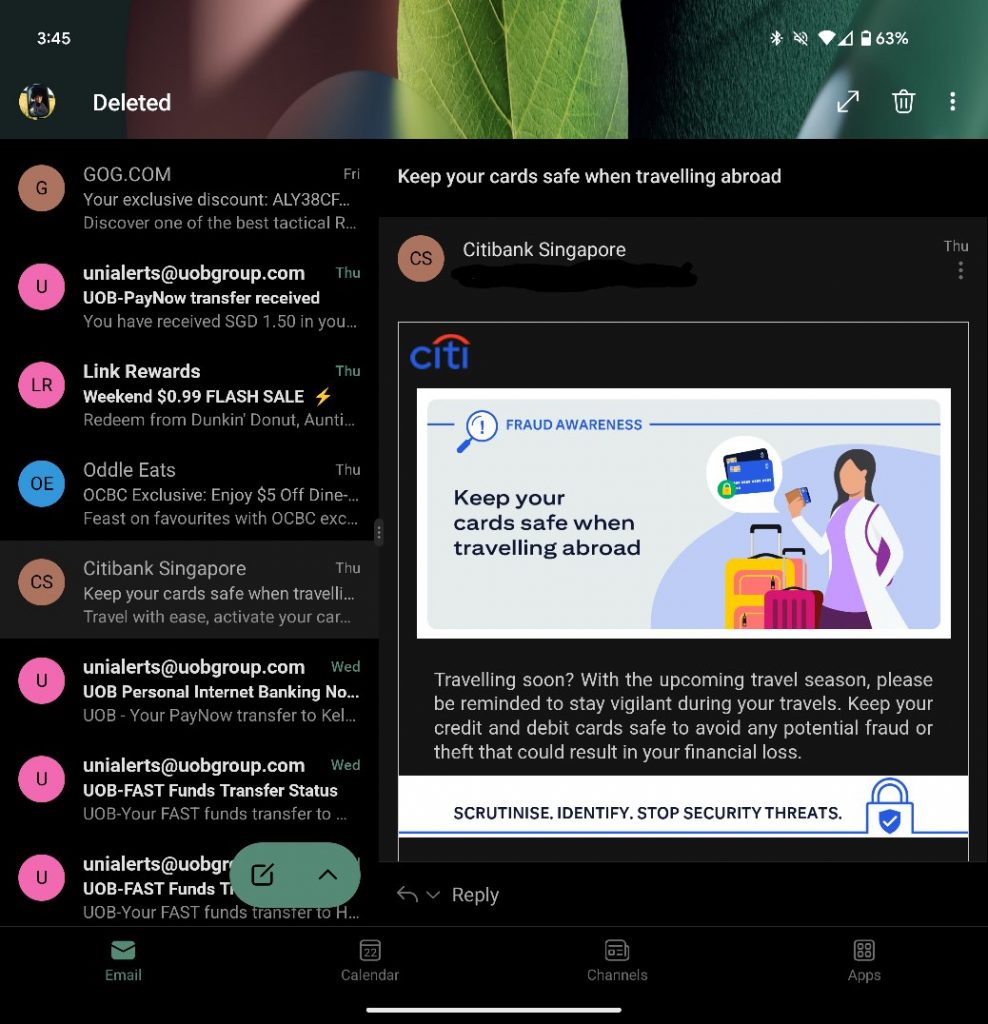
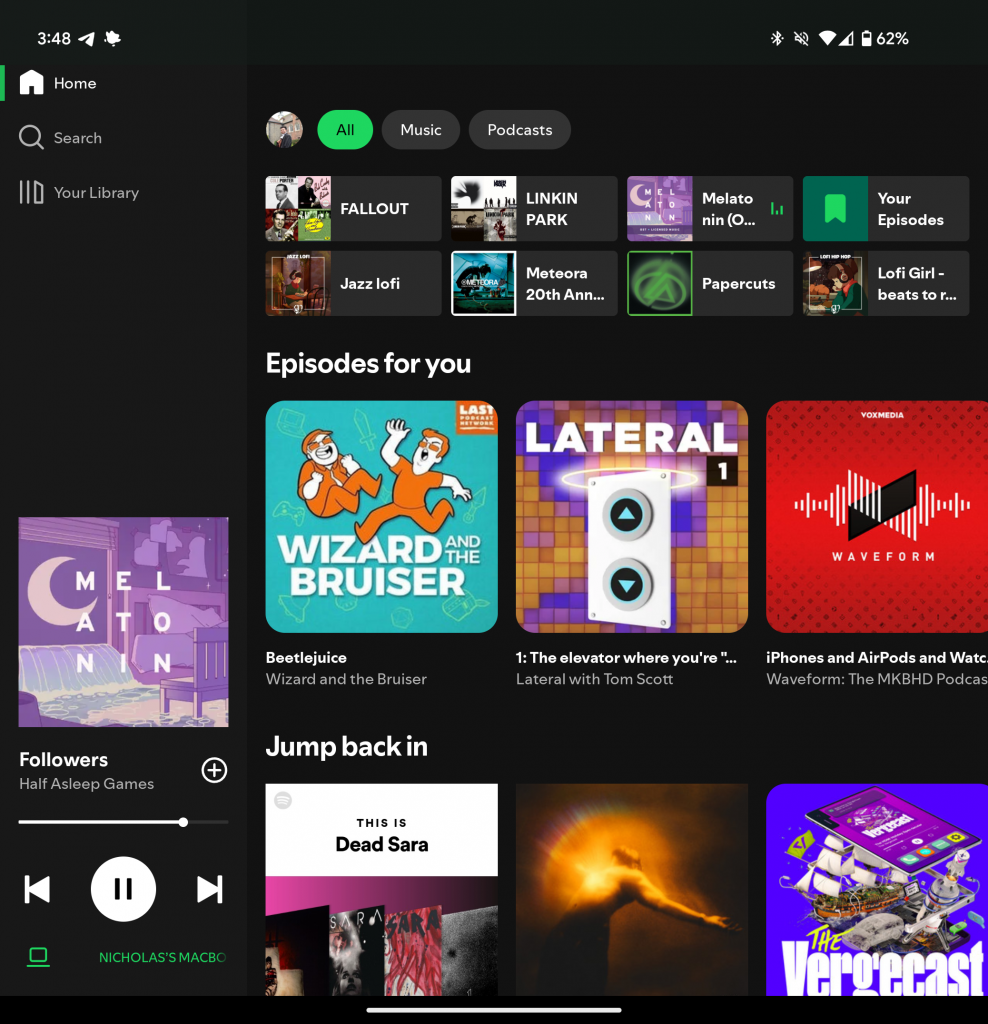
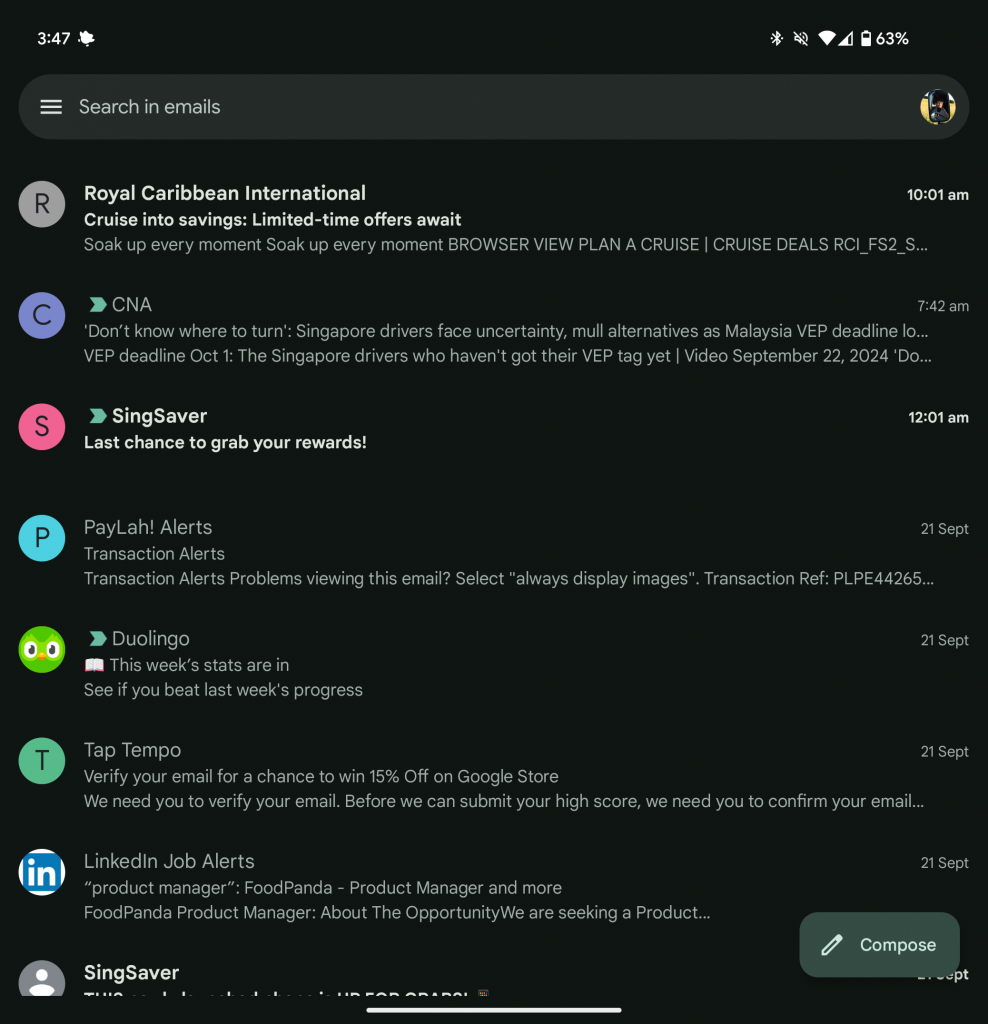
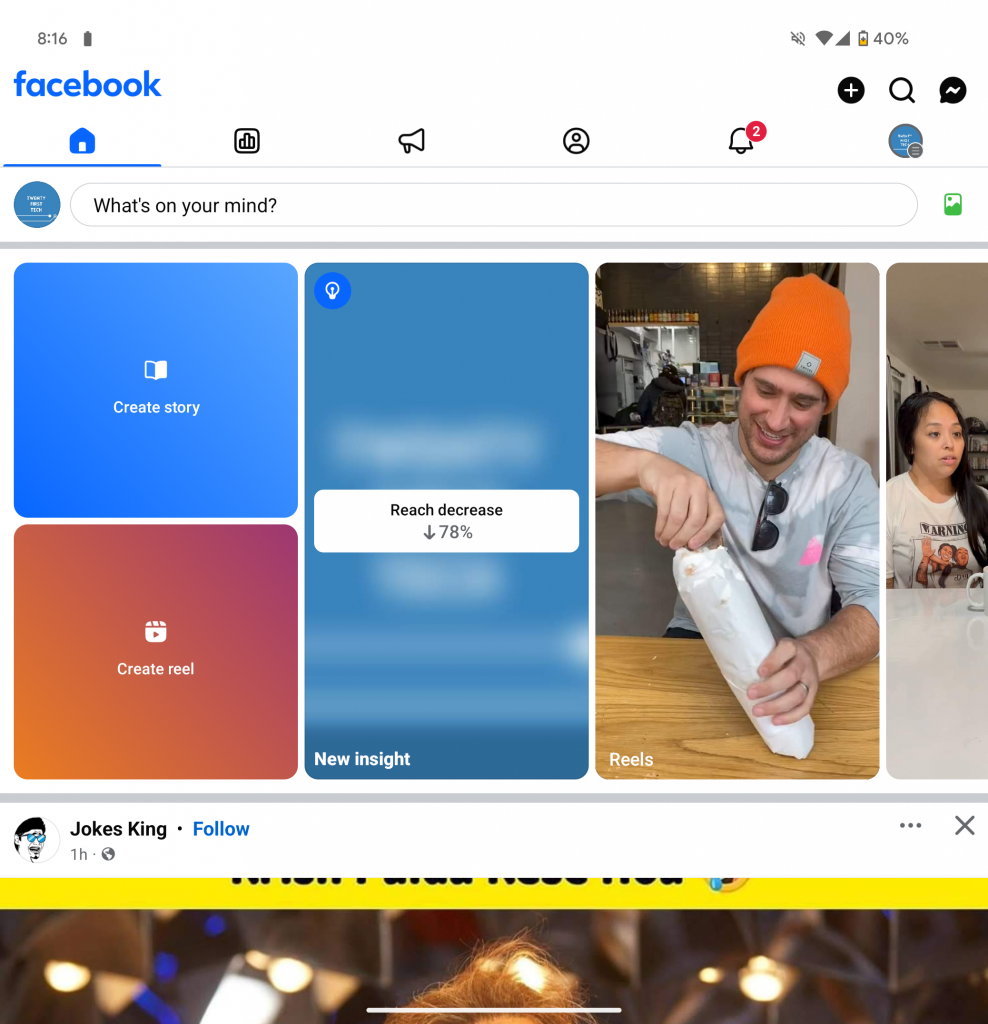
- Cut-off/poorly scaled UI elements. When viewing a YouTube video and pulling up chapters, chapter titles are cut-off and hence unreadable. Captions are massive and block the video when in fullscreen on the internal display. While reducing the font size fixes this, the setting is inconvenient to get to and makes the captions tiny whenever not in fullscreen, or when on the cover display. Clearly there’s something wrong with the size scaling here. Similarly, in certain games, there are sometimes issues due to the displays unconventional aspect ratio. In Arranger for instance, there was one stage where my character would go offscreen and the camera wouldn’t follow her, making it impossible for me to traverse the area. I had to close the game and relaunch it on the cover display for me to get a complete view of the area and my character.
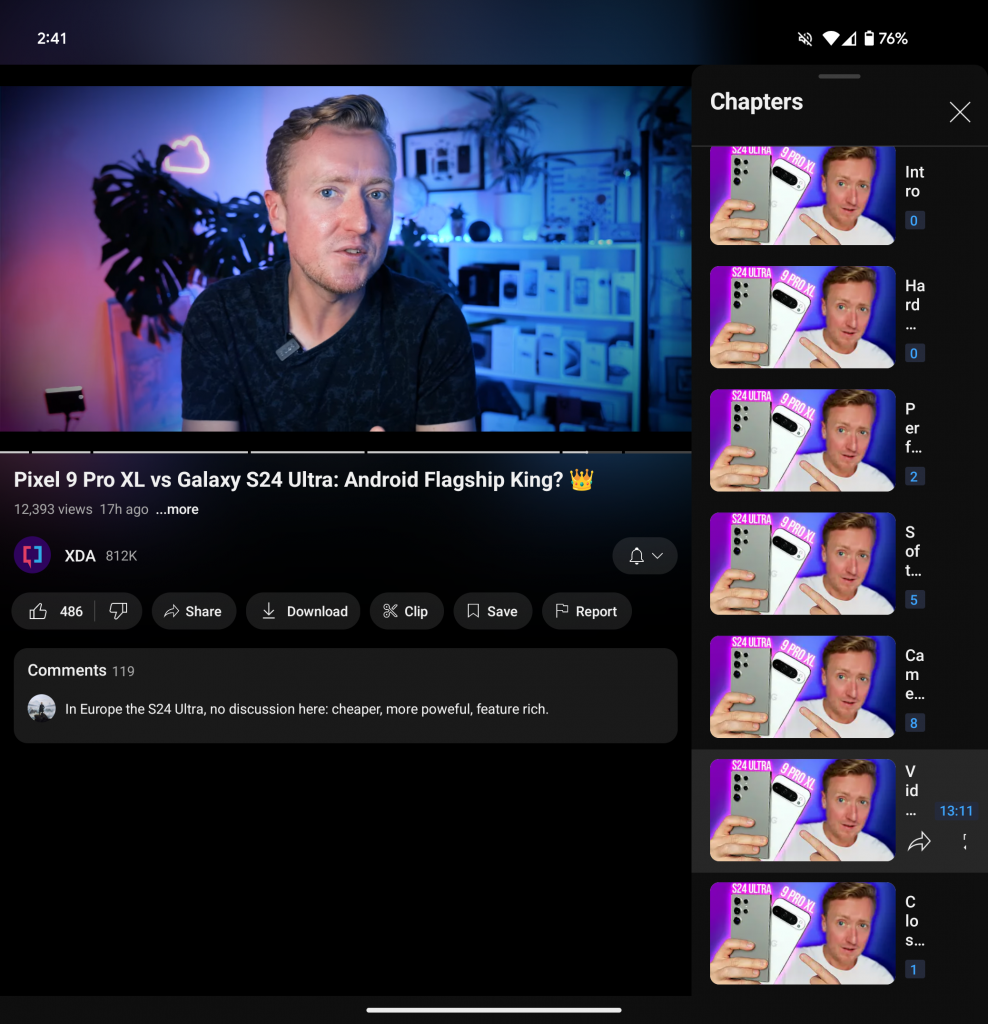
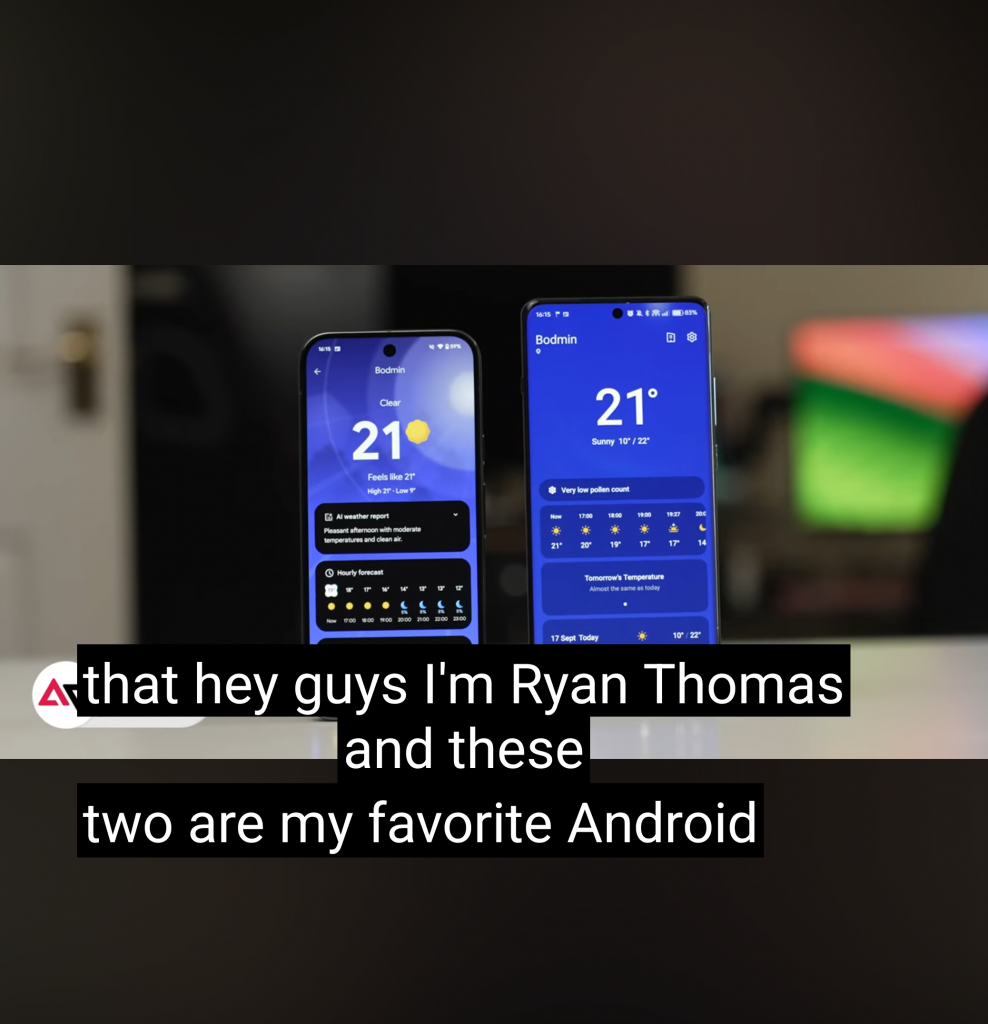


- Other compatibility issues with the internal display. These might be app-specific. Telegram was by far the worst offender. (1) It refuses to enter split screen mode, and will crash the Pixel launcher if you attempt to do so more than once; (2) It rotates the screen by 90° whenever you take a video message; (3) Selecting Telegram from the share menu switches to Telegram, but sometimes doesn’t bring up the dialog window to choose which chat you want to share to. Apart from Telegram, I’ve also had issues getting Grab’s QR scanning feature to work while the phone was unfolded.

- UI issues when switching from cover to internal display or vice versa. Some apps face UI issues (eg overflowing text) when going from the cover display to the internal display or vice versa, and require you to relaunch the apps to fix this.
- No floating windows. The only option you get for multitasking is a vertical splitscreen that runs two apps side-by-side. You can adjust the ratio of the split beyond just 50-50, but you can’t run any more apps than that simultaneously, unlike most other foldables from Samsung or Chinese brands. It seems that Google might be looking to add true desktop windowing in Android 15, so we can hope that multitasking will get better in the future.
- Home screen layout. Not having the option to have different layouts for the cover and internal display is a bummer for some, but doesn’t bother me. What does bother me is that the internal display allows you to put 6 items in the dock, while the cover screen only lets you put 5. This just messes with my home screen layout as I suddenly lose quick access to one of my most used apps when the phone is closed.
It is clear that Google has their work cut out for them in terms of tweaking both the software and app compatibility of the Pixel 9 Pro Fold to better handle the internal display. I do have some degree of confidence that these will get fixed over time – as mentioned above, a few apps have already been updated with fixes – but at the same time, the low foldable take-up rate has me wondering how high a priority this is to both Google and app developers.
Google made the right foldable compromises
Fortunately, beyond the software woes, it seems like Google has done a stellar job at handling common foldable compromises, making what I feel are the right trade-offs between size, battery, and cameras.
Size
First, the size. How large do you want your foldable to be? Ideally, you’d want it to feel like a normal phone when closed.
Google doesn’t quite get there, but comes impressively close – the Pixel 9 Pro Fold is 10.5mm when closed, just 2mm thicker than the regular Pixel 9 Pro. In practice, I found this to be mostly one-handable – swipe-typing was fine, though accessing punctuation was a bit of a stretch. Of course, the weight (257g) makes it a lot more uncomfortable to use one-handed than a “regular” phone for long stretches at a time. And if you put a case on it (as you’d likely to want to protect your S$2,400 investment), it becomes even bulkier and heavier.
Surprisingly, when unfolded, the Pixel 9 Pro Fold is very comfortable to use, even more so than closed. When closed, it feels like a denser-than-normal phone. When unfolded, it feels like a lighter-than-normal tablet. Because of this, I find myself unfolding it at every opportunity I got, even when doing mundane tasks like responding to a text. I even found reading articles with one hand to be not only doable on the larger screen, but preferable. Typing on the large screen is also unbelievably comfortable – I’m a swipe-typer, and on the internal screen I can easily swipe-type with the keyboard set to one-handed mode.
Yes, it’s not as thin or normal-looking as something like the Honor Magic V3. But it also exceeds the Magic V3 in something else – the battery.
Battery
If the foldable is made thinner, there’d be less space to fit a battery, and naturally, battery life will suffer.
Ok, this argument falls apart somewhat as the Magic V3 actually has a larger capacity battery than the Pixel 9 Pro Fold despite being thinner (5,150mAh vs 4,650mAh), but it is true that the Pixel 9 Pro Fold has better battery life than the Magic, be it thanks to Google’s software magic or otherwise.
Impressively, despite the Fold’s slim profile, Google managed to fit a battery that’s almost the same capacity as the Pixel 9 Pro. But of course, the much larger screen of the Fold means that battery life is worse than its sibling.
In practice, I found that while the Pixel 9 and Pixel 9 Pro XL had about 30-40% battery left after my typical 5-6 hours of screen on time in a day, the Pixel 9 Pro Fold would have around 20-30% battery left. This is with majority of my time spent on the inner display, watching YouTube, Netflix, web browsing, streaming Spotify, and an hour or two of navigation with Android Auto. It’s also without ever toggling Battery Saver on. Note however, that it seems like Android counts Android Auto sessions towards screen time as well.
The max I got out of the Pixel 9 Pro Fold was 6h 52min of screen on time, with 12% battery left at 12am. I’d say if you really push the phone, you’d probably get 7h of screen on time in a single charge at most. I might take these screen on time numbers with a grain of salt though, as there was one time where I noticed the phone claiming that I had >5h of screen time with Reddit, despite only using Reddit for half an hour at most.



While that’s slightly worse battery life than a “regular” slab phone, it’s apparently pretty respectable for a foldable, beating out the Galaxy Z Fold6 and aforementioned Honor Magic V3.
It’s also good enough to last me the whole day, although I’d probably set Battery Saver to trigger at a higher threshold than usual just to be on the safe side.
The real issue here is battery health over time. If the Pixel 9 Pro Fold barely gets me through the day now, it certainly will not get me through 2 years later. I’ve talked about this in my Pixel 9 / 9 Pro XL review, and hopefully Google will soon implement more software features to prolong battery longevity.
Another main complaint that people have is the slow charging speed – topping out at just 21W, though this doesn’t bother me as much since I typically top off my phone overnight.
Cameras
Finally, the cameras. Similar to the battery, make the phone too thin and you won’t have space to shove as big of a sensor in there as you’d like. Try as Google might, the sensors in the Pixel 9 Pro Fold are decidedly smaller than its Pixel 9 counterparts.
But does it matter, or can you not even tell?
Having had some time with the Pixel 9, Pixel 9 Pro XL, and Pixel 9 Pro Fold, I set out to answer this question. And for fun, I also threw in my Pixel 5 in the mix.
I was particularly interested in the 5x optical telephoto camera, since that is what sets apart the Pro phones from the non-Pro ones. I also wanted to know how much telephoto performance you’re losing with the smaller sensor on the Fold compared to the Pro or Pro XL.
Below, at 5x zoom, 100% crop, the only clear difference is that the Pixel 5 has significantly less detail and more artifacting. The other Pixels’ images look almost identical.
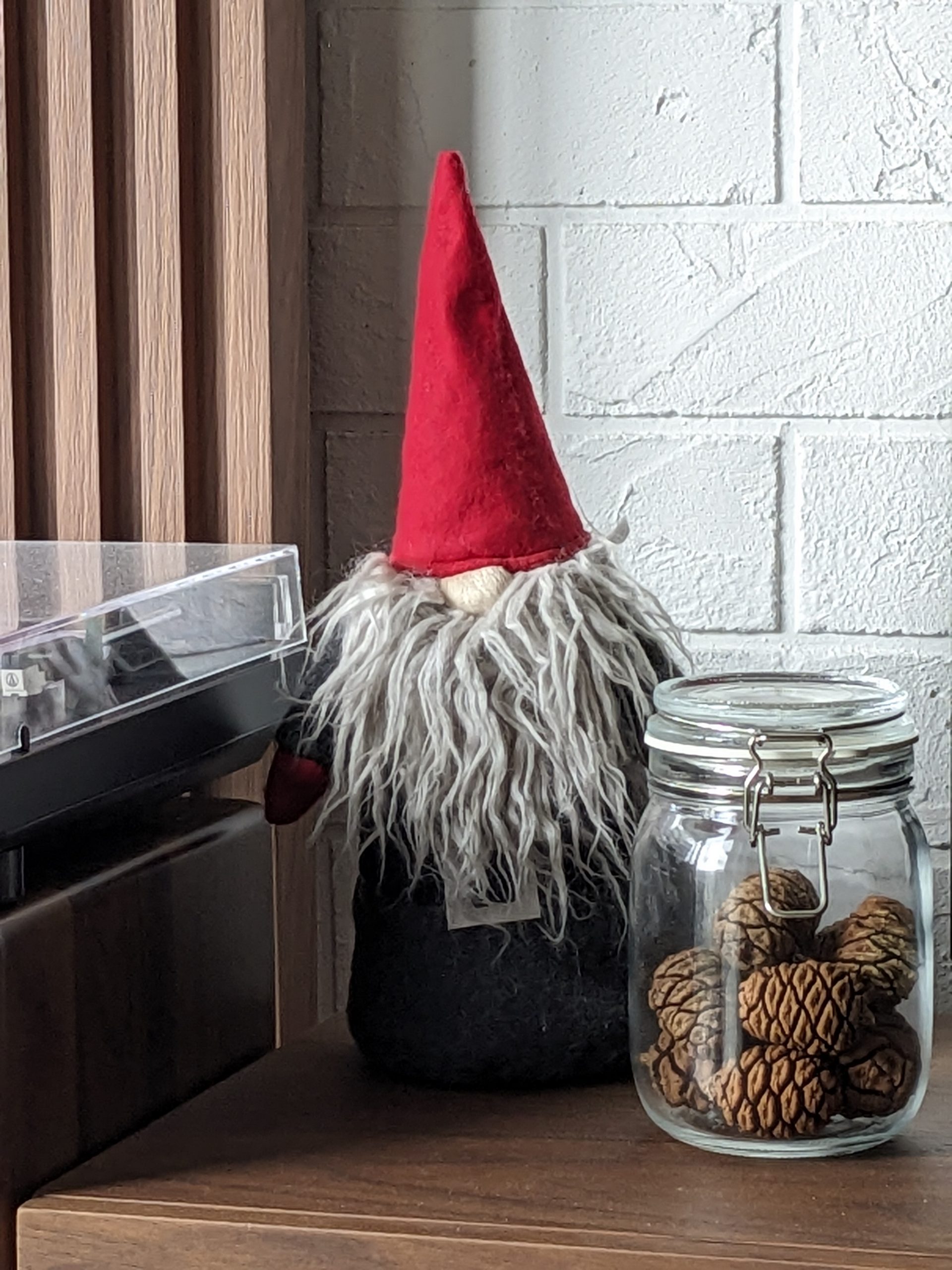
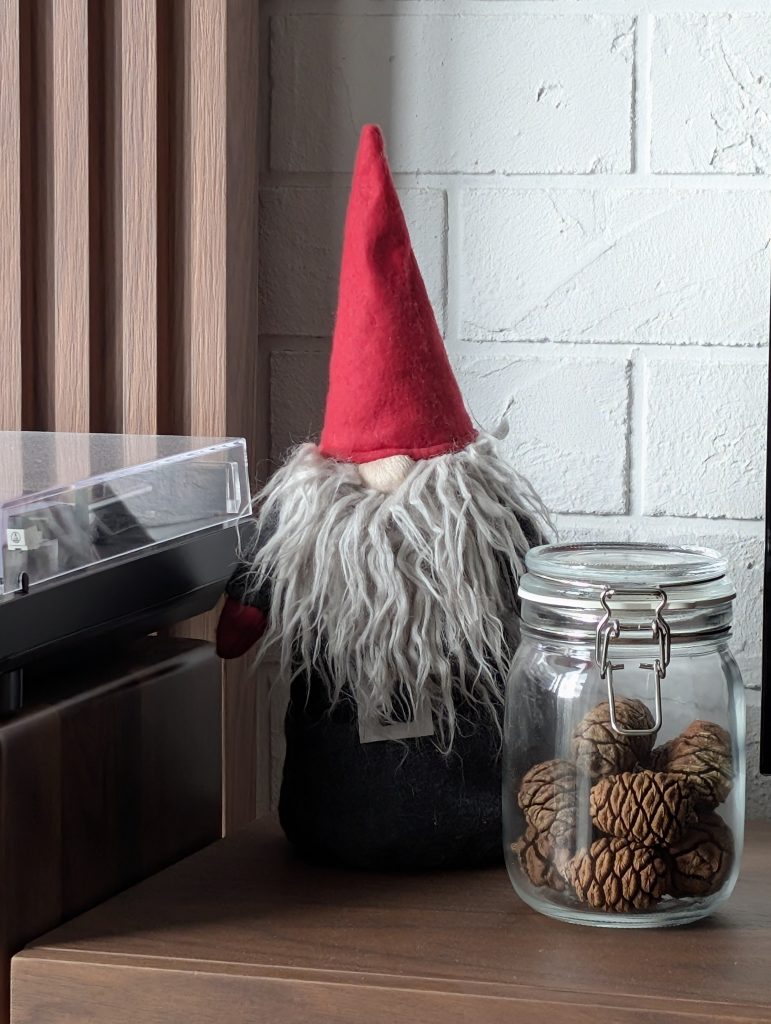
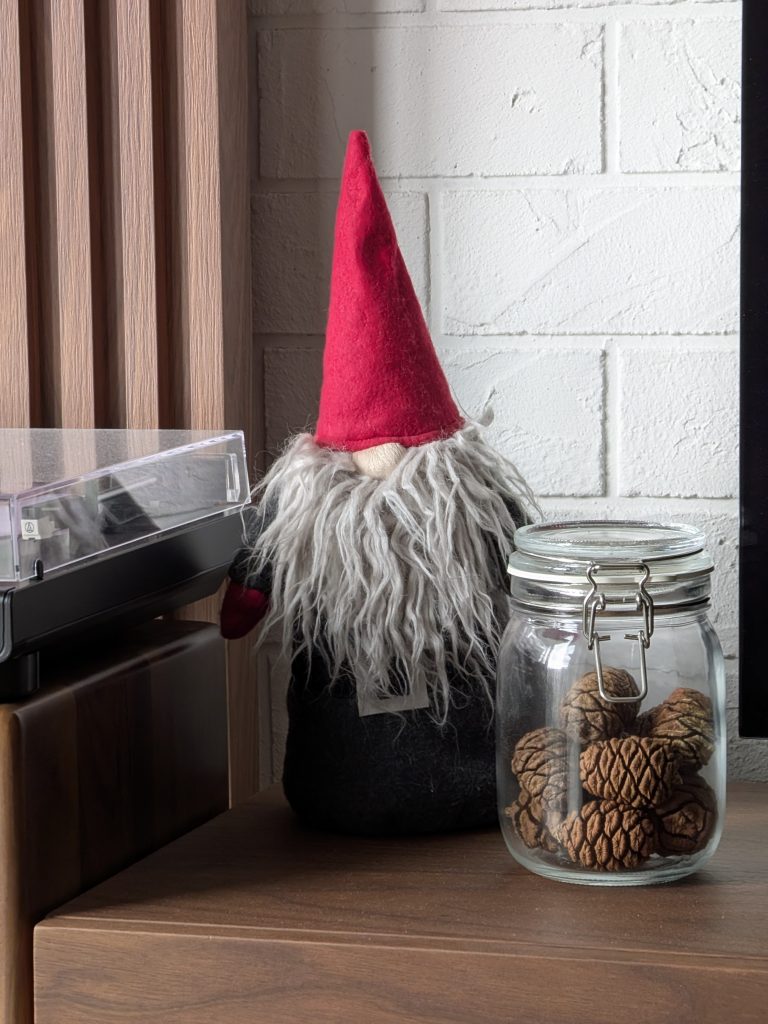

Cropping in to 400% though, the differences are more obvious. It’s interesting to see a clear progression in detail going from the Pixel 5 > Pixel 9 > Pixel 9 Pro Fold > Pixel 9 Pro XL. Once again, the most glaring jump is from Pixel 5 > Pixel 9, even though both do not have dedicated telephoto lenses. It would seem that Google’s software magic + the use of larger main sensors over the years has paid off in terms of digital zoom capabilities.
The jump from Pixel 9 to the 9 Pro Fold’s dedicated telephoto lens is also obvious. While there’s almost no detail in the gnome’s red cap in the 9, the Fold brings out quite a lot of detail there. The same goes for the fine hairs in the gnome’s beard – you can make out individual hairs with the Fold where the 9 just renders a blurry mush. The 9 Pro XL takes it a step further though – yet more detail and sharpness, especially in the fine hairs.
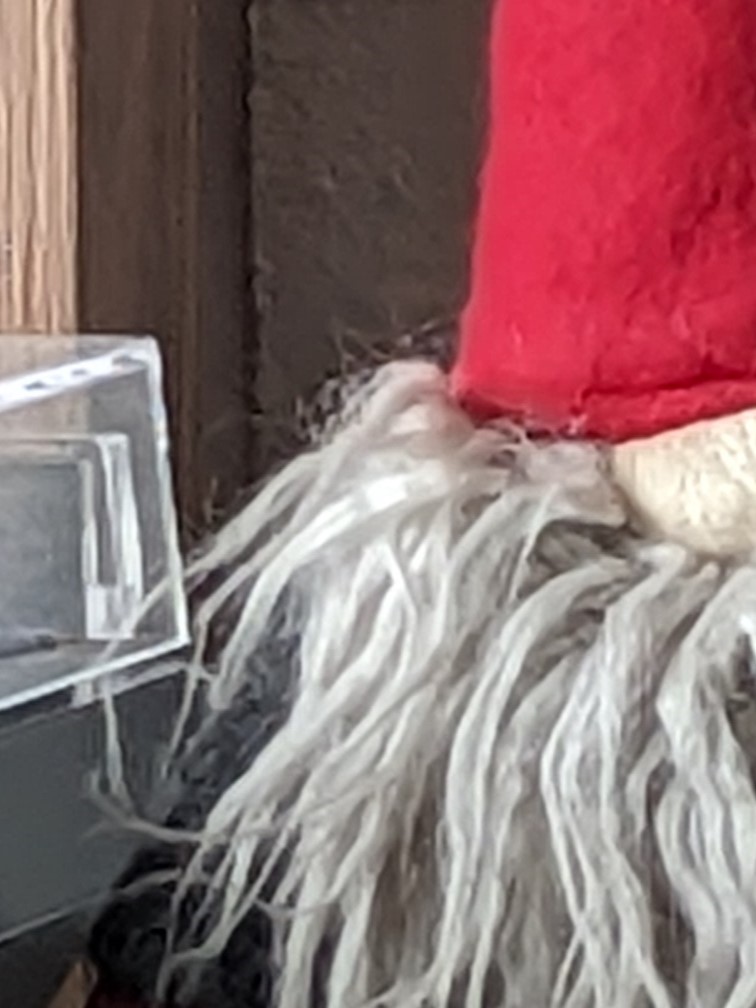

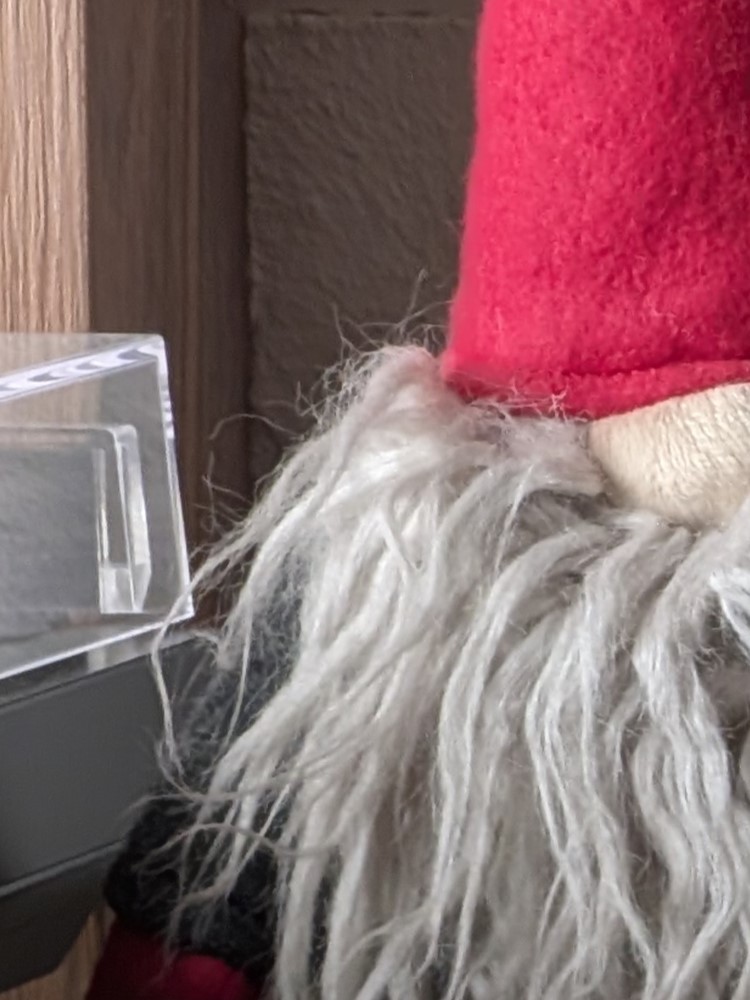
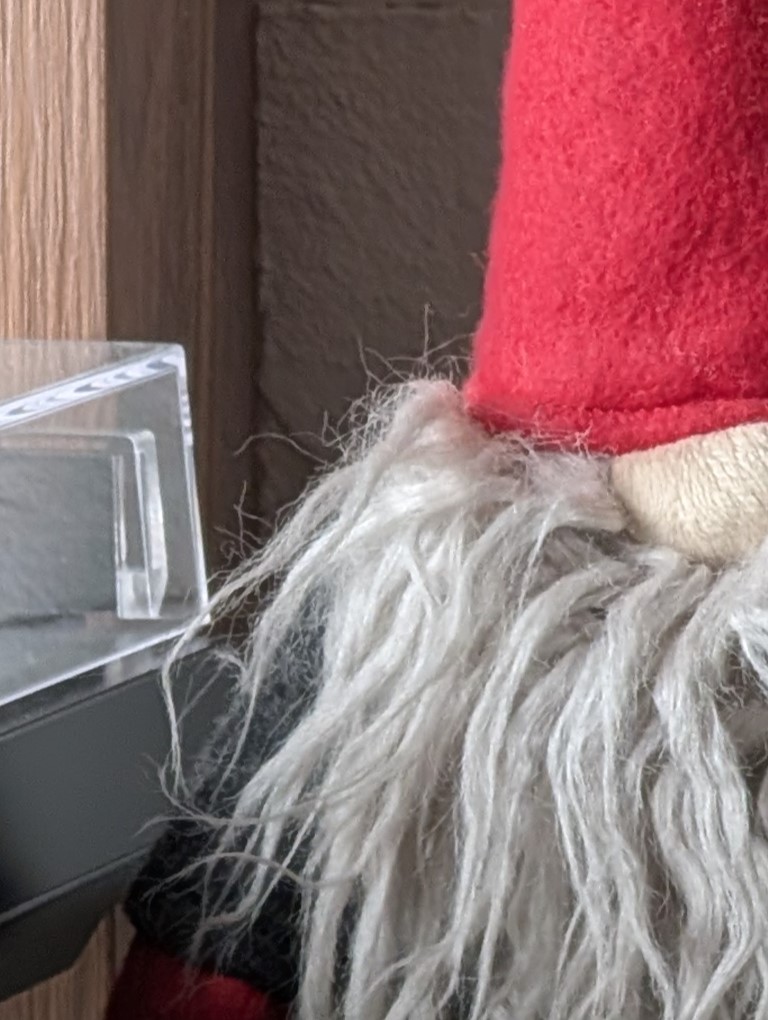
It’s worth noting that instead of doing a 5x zoom and cropping in after the shot was taken, you are better off just zooming even further in the viewfinder during capture. That’s because Google’s super res zoom algorithm kicks in to bring out even more detail from your hand movements, multiple frames, etc. It’s clear from the results below that the 20x zoom on the Fold has a lot more detail and sharpness than cropping the 5x photo.

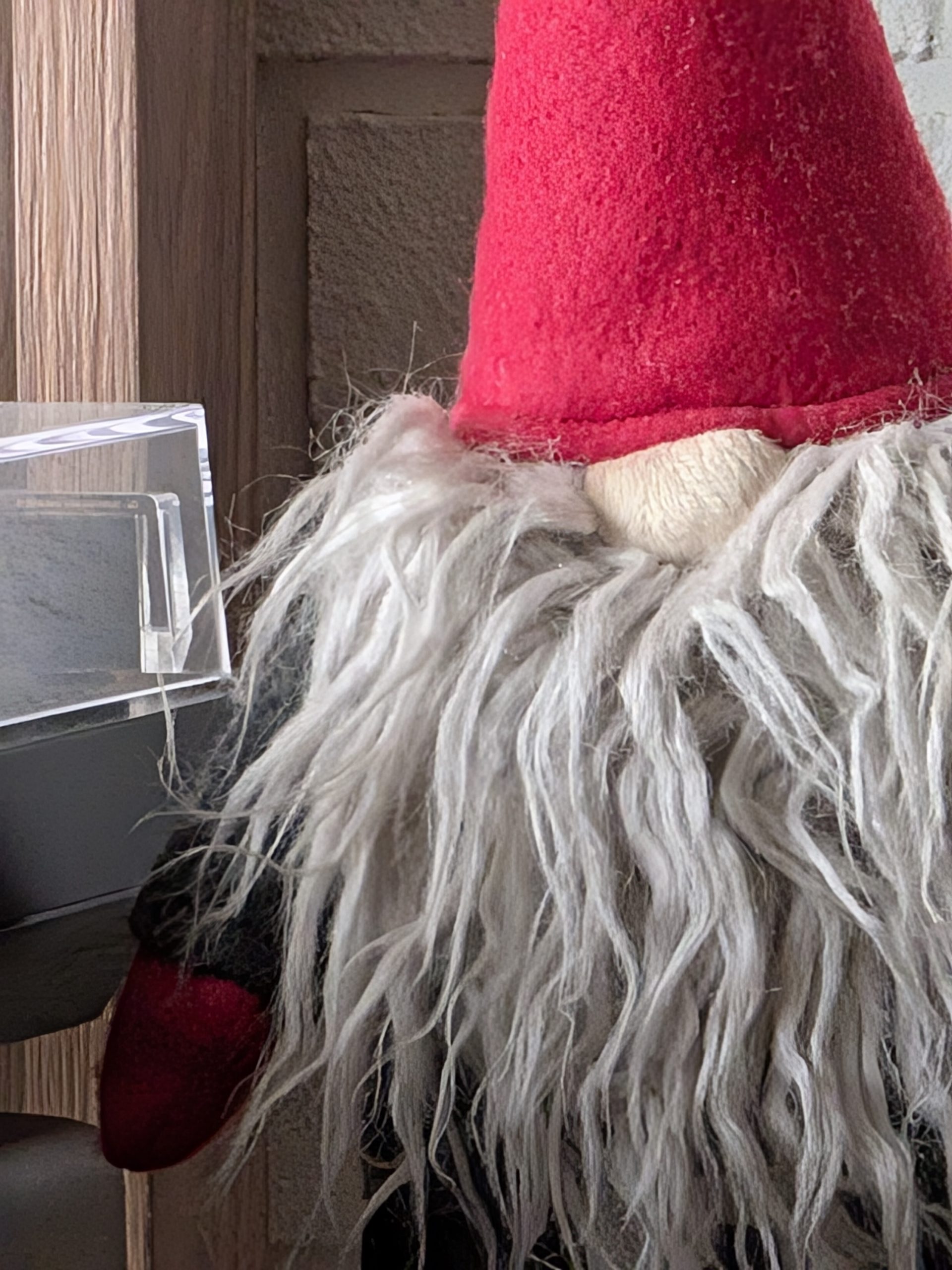
Perhaps most interestingly, it seems like the 20x image from the Fold is almost indistinguishable from the Pro XL’s, perhaps thanks to Super Res Zoom:


But of course, the higher resolution of the Pro XL allows you to zoom in even further to 30x:
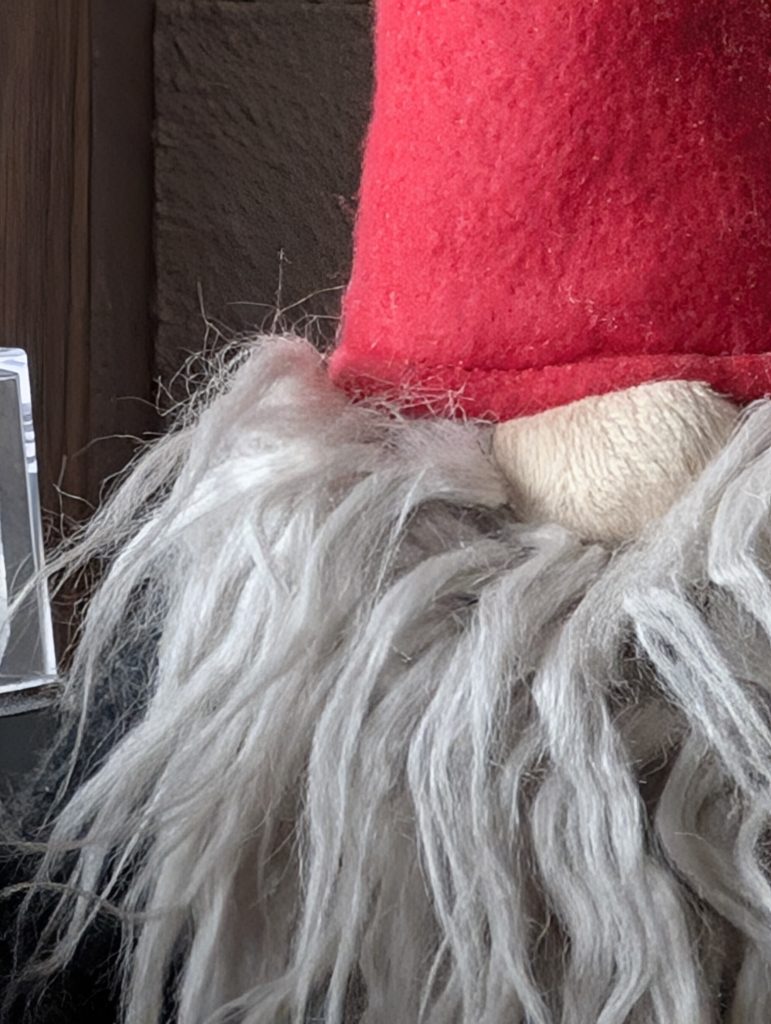
Here’s one final comparison of the max zooms that you can have on each of the phones:
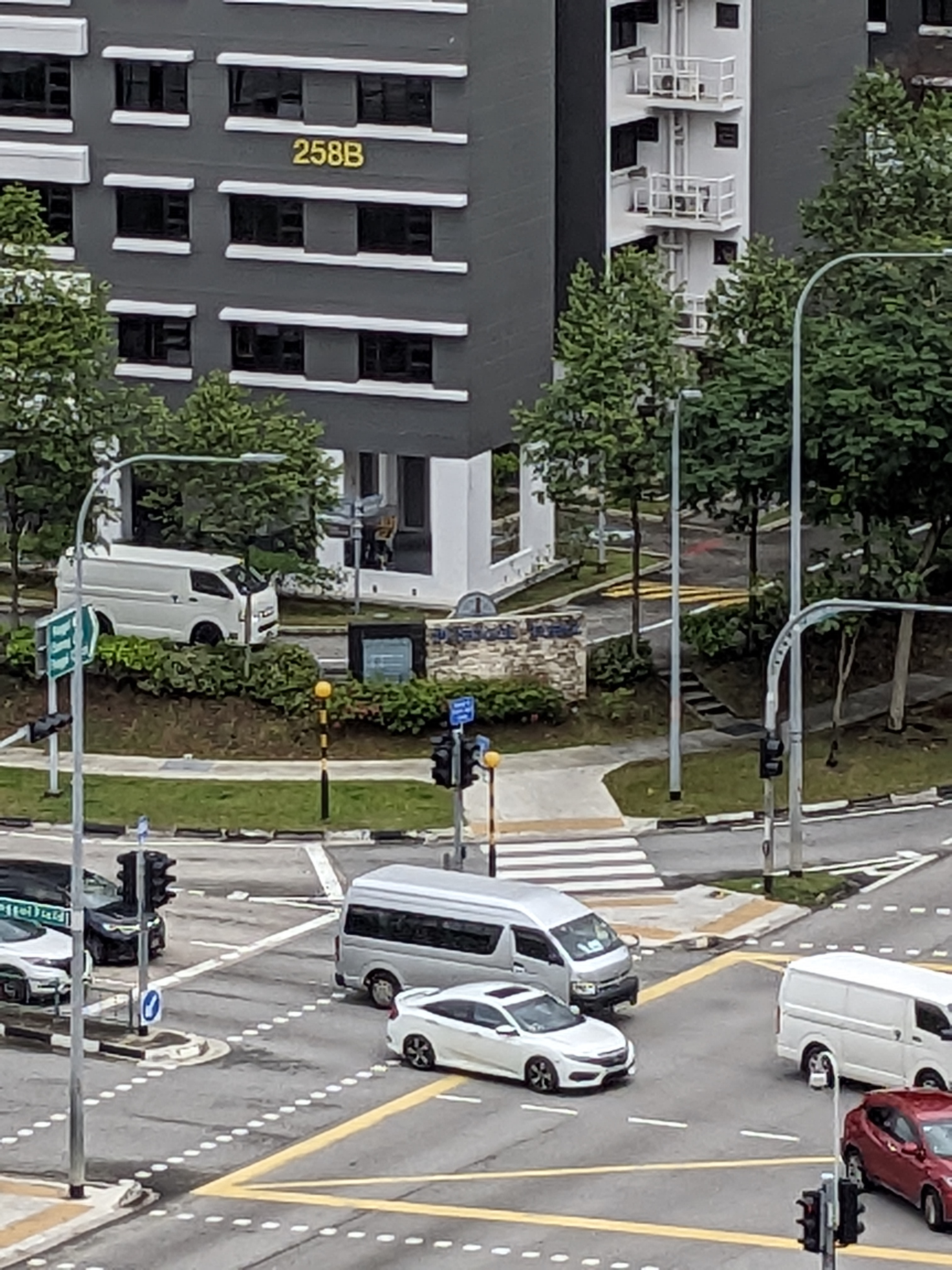
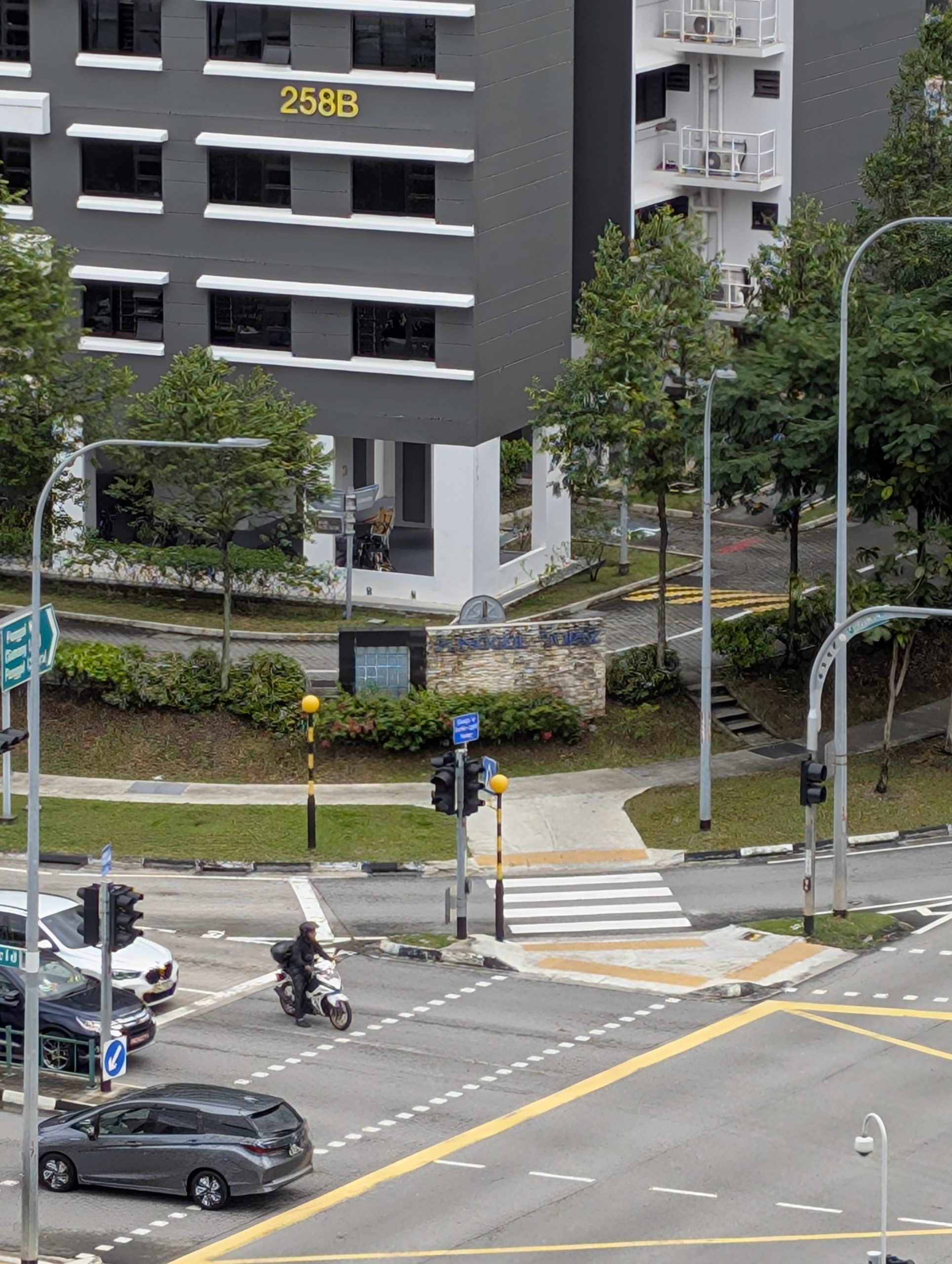

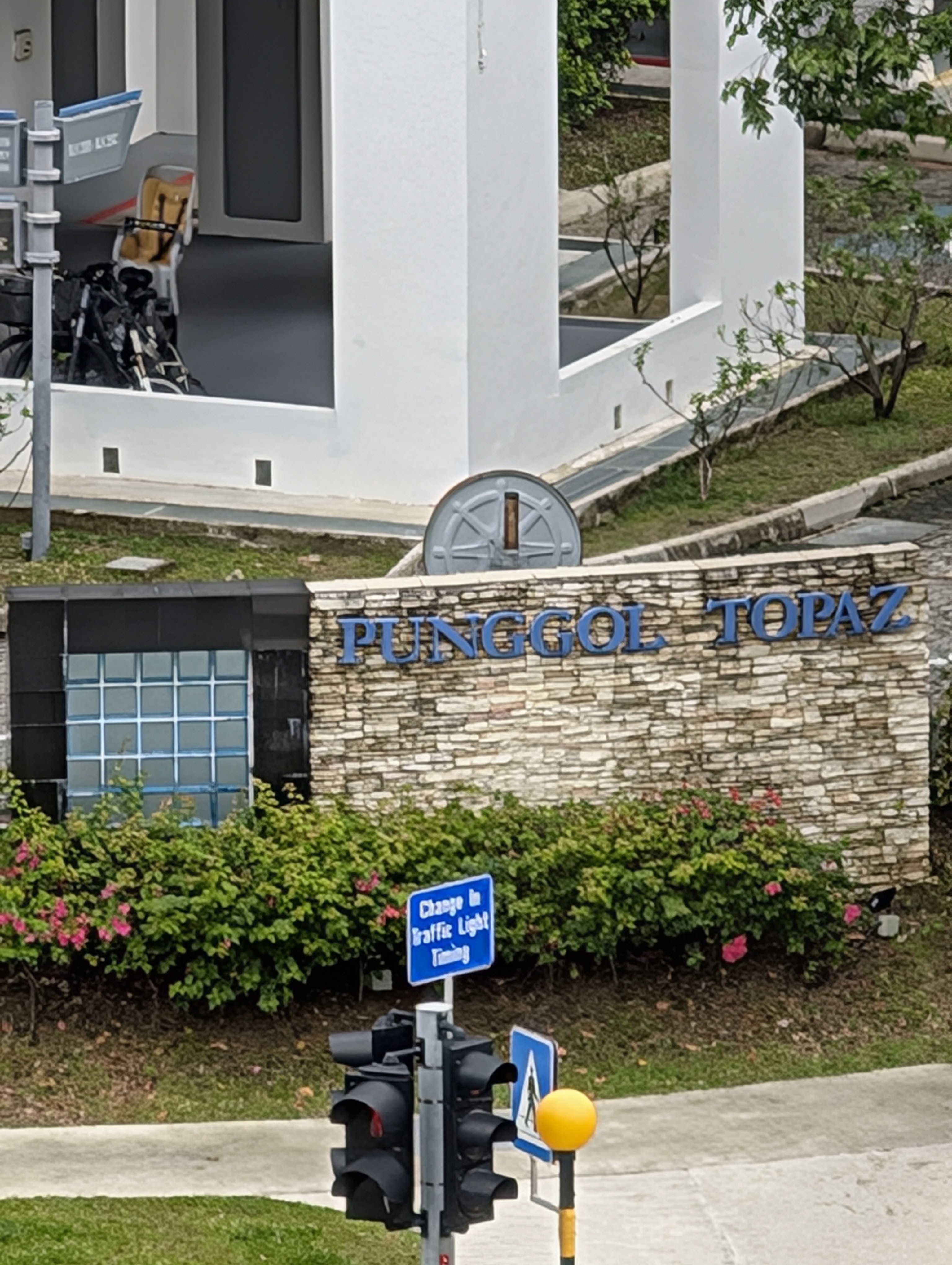
The telephoto camera was the area where I noticed the most significant differences; the main and ultrawide cameras performed almost identically across the Pixel 9 series in my testing, in both daylight and lowlight, so I won’t delve into those comparisons. Here’s some more photos from the Fold:
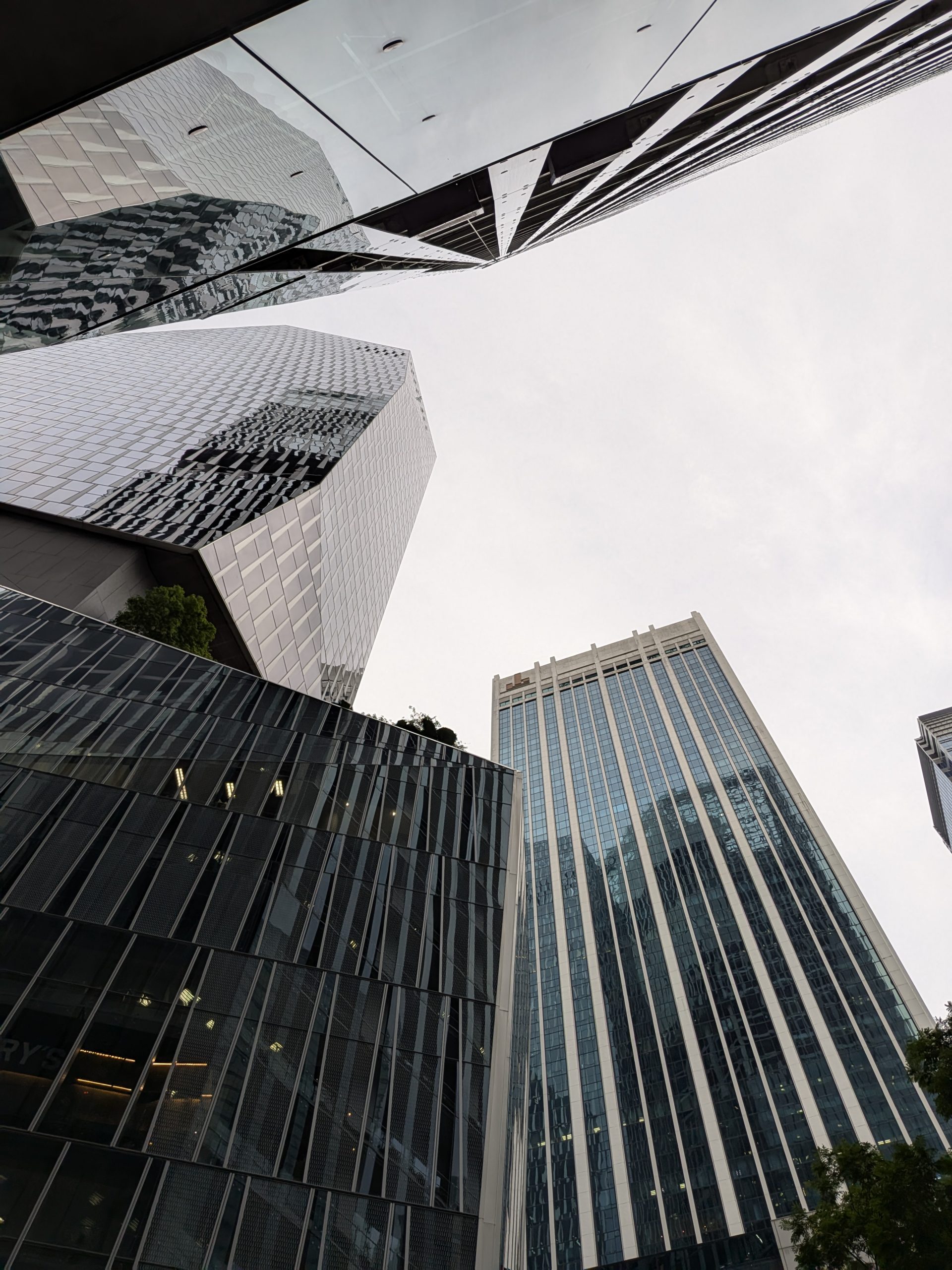
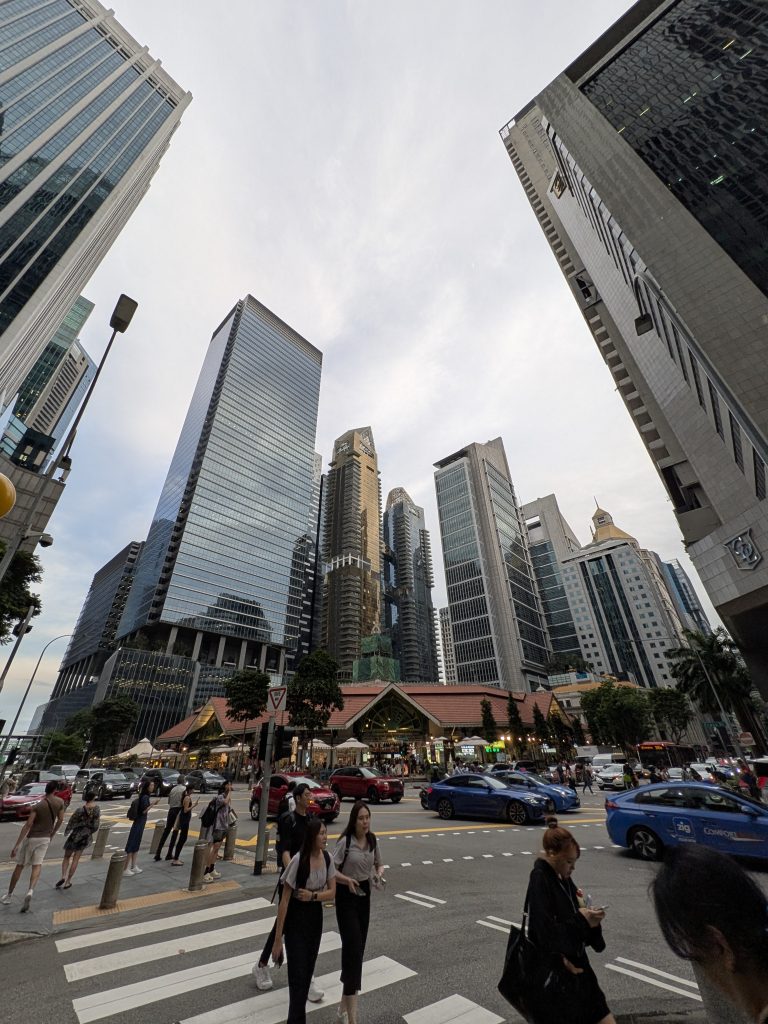
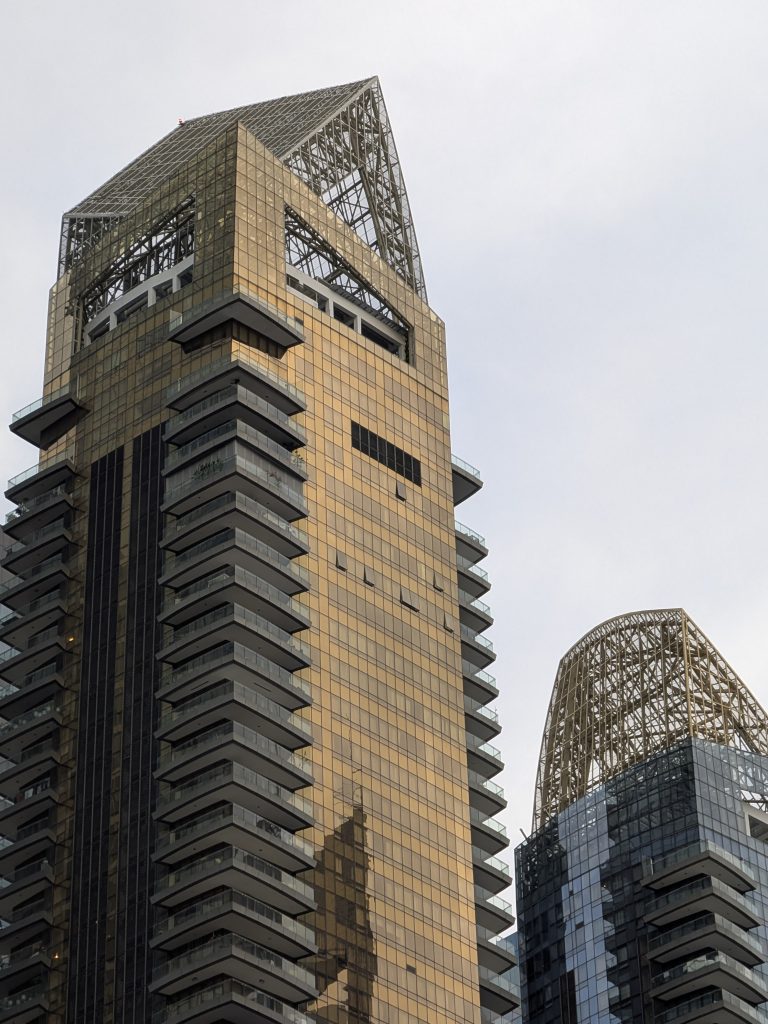
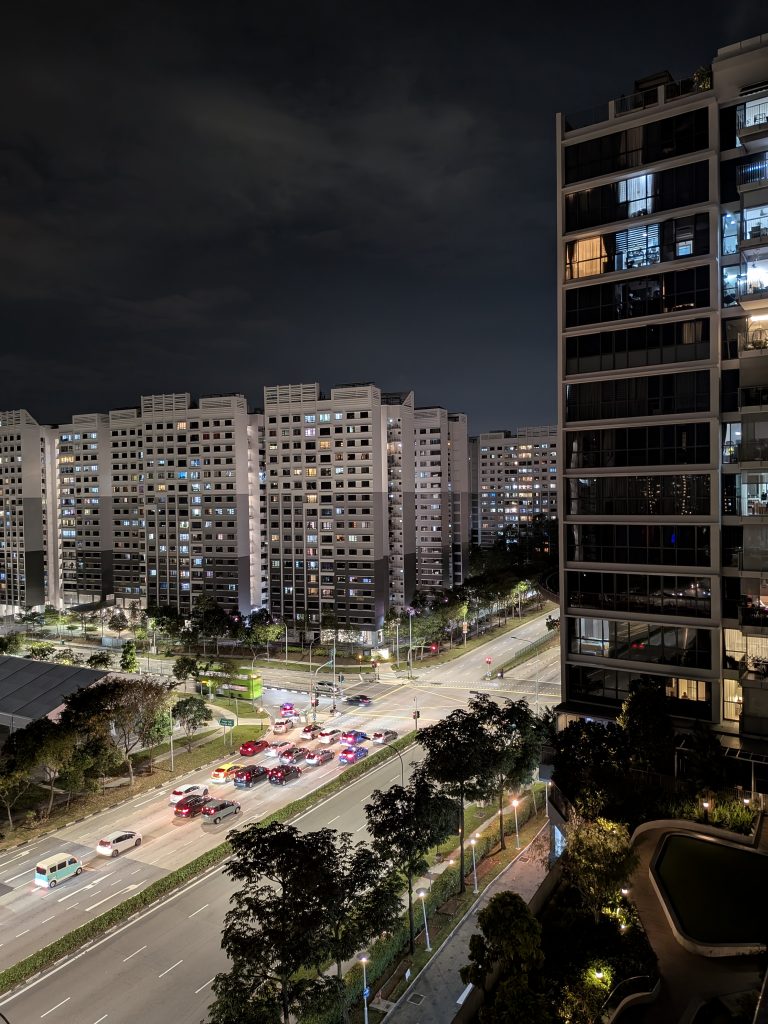
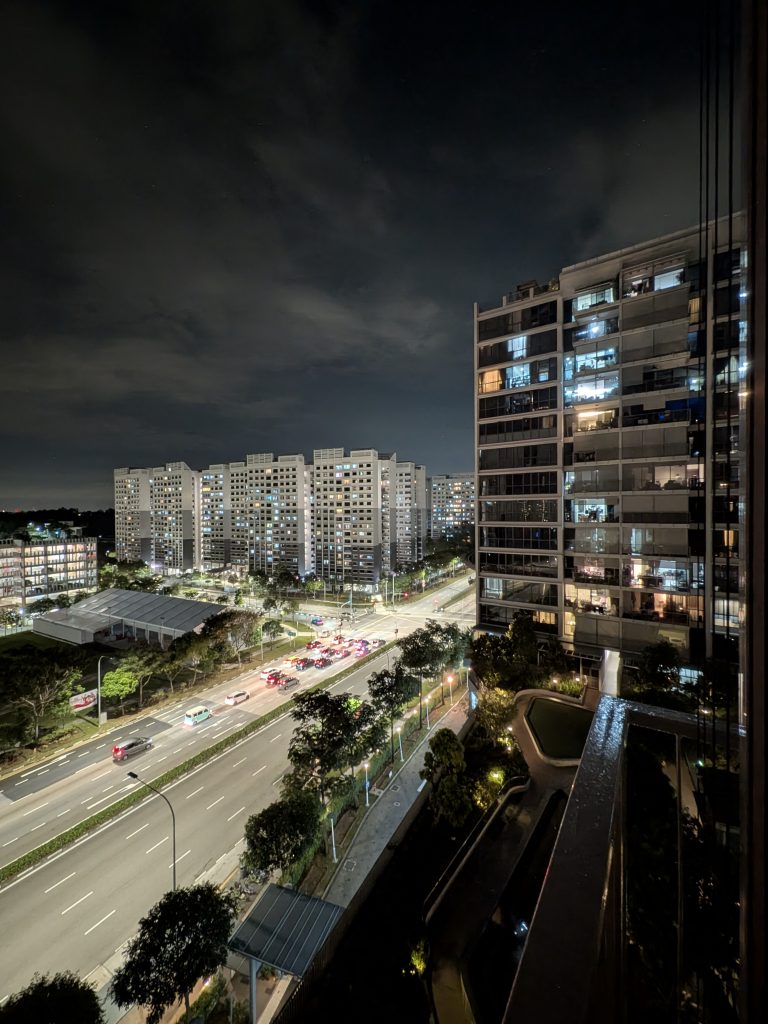
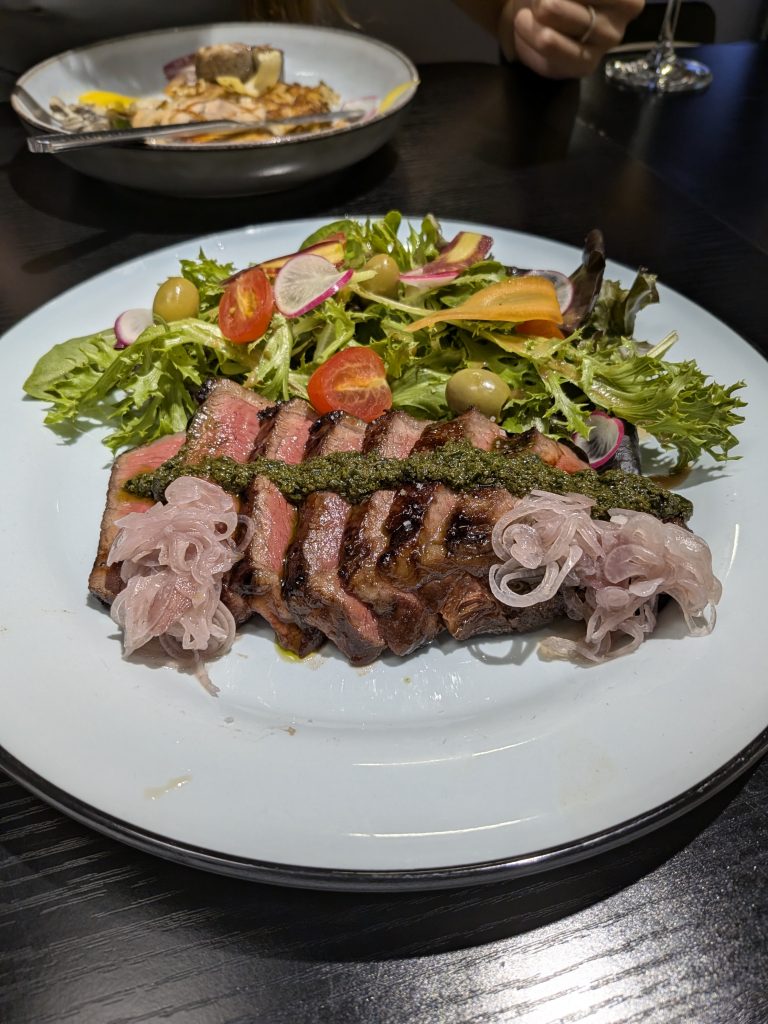
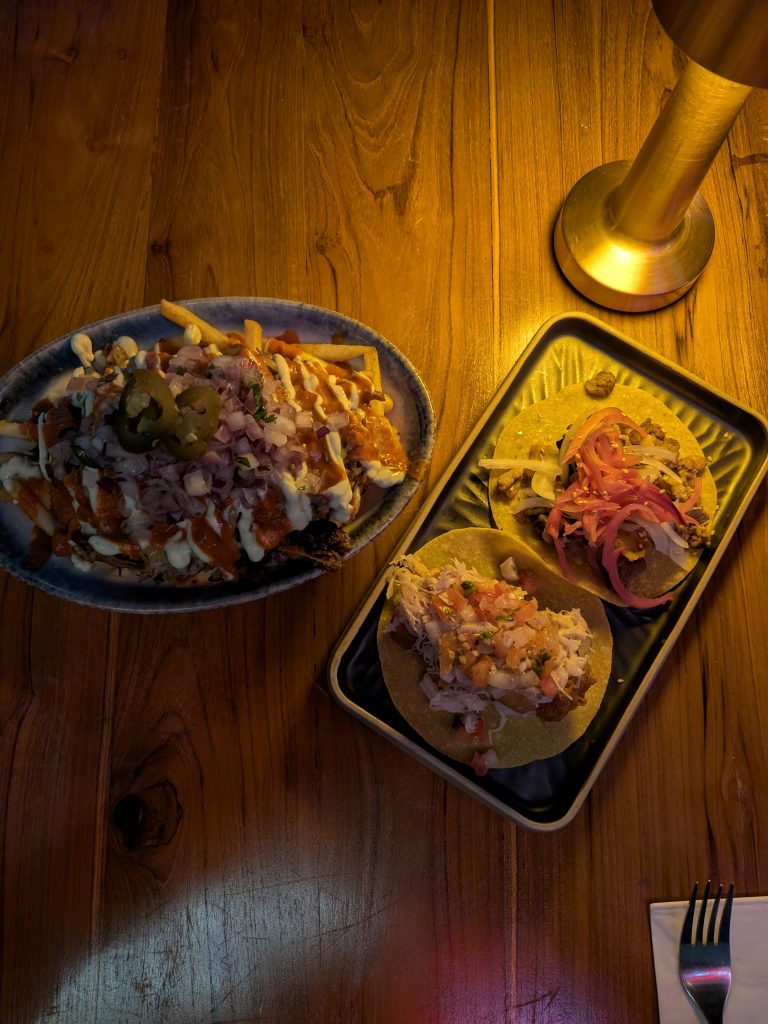

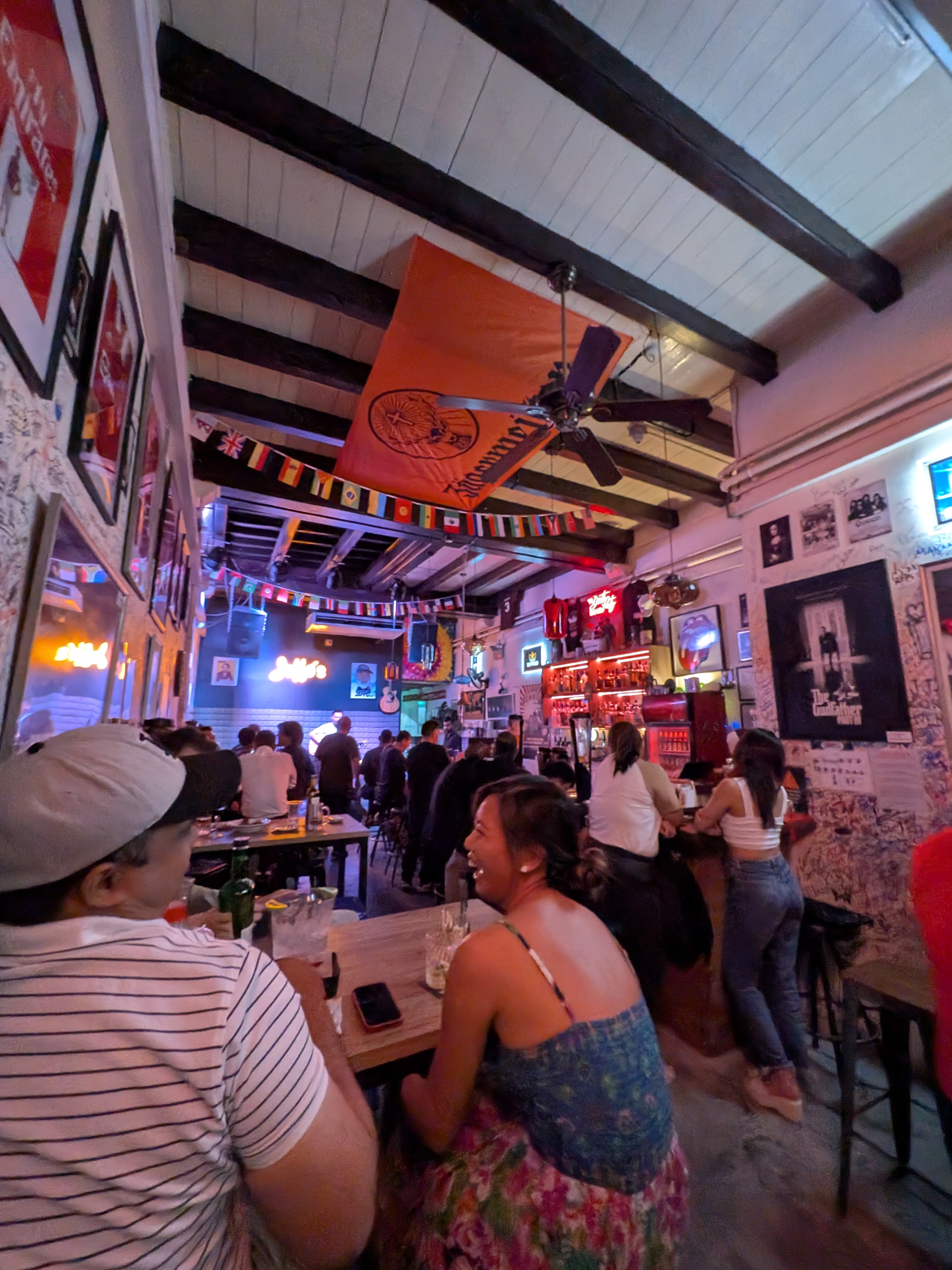

TL;DR: Comparing the Fold to the Pixel 9 and Pixel 9 Pro XL, I feel there’s hardly any difference to the camera quality of the main and ultrawide cameras. To the Fold’s benefit, its dedicated telephoto lens is definitely a huge step up compared to the vanilla 9’s digital zoom, and the difference in quality is almost indistinguishable when taking 20x zoom shots on the Fold vs the XL. Yes, the XL’s larger sensors will translate to more detail in trickier scenarios, but I feel most people won’t notice unless you go pixel-peeping. The differences certainly aren’t significant enough such that I fretted over not having the Pixel 9 Pro instead.
Video: I take limited video, so you might want to check out other reviews if the video quality is of concern to you. But in my brief time with it, I found the telephoto video somewhat jittery, even with video stabilisation turned on. Transition between lenses also wasn’t smooth. Google clearly still has some work to do to catch up in the video department.
The joy of a tablet in your pocket
So we’ve established that apart from the software quirks, the Pixel 9 Pro Fold generally does well in the basics – decent ergonomics when closed, excellent ergonomics when open, solid battery life that’s just marginally worse than a regular phone, and cameras with minimal compromises compared to the Pro.
But what convinced me to get one for myself?
It really comes down to the joy of always having a tablet in your pocket. I’d argue that a foldable provides greater value than having both a “regular” phone and a tablet, precisely because you always have it with you. You don’t need to fret about leaving your iPad at home, or in a bag.
Plus, you get to do normal “phone” things on it, but on a much larger screen. For instance, on more than one occasion I found myself at a restaurant that provided PDF menus via QR codes instead of physical menus. Typically I’d be annoyed as the PDF menus are not formatted for mobile screens and I’d have to either squint or pinch in to read. And I wouldn’t pull out an iPad from my bag just to view the PDF menu. But with the Fold, I can just open up the inside screen and view the full menu at a reasonable font size.
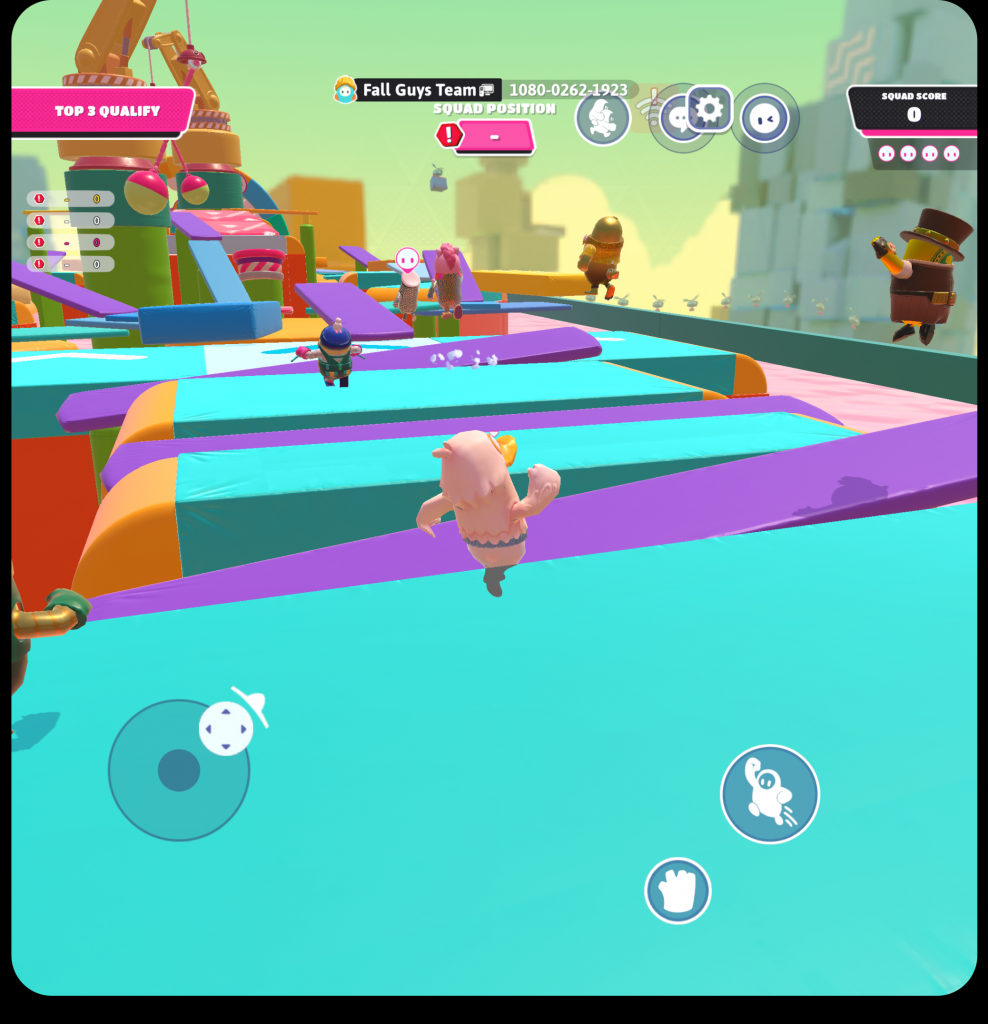
Everyday things are just better on a bigger screen – browsing the web, playing games, watching videos. Yes, you sometimes get the aforementioned UI quirks, and the benefit of the big screen for video depends on the aspect ratio (while 16:9 content is considerably larger, 18:9 or 21:9 content is more or less the same size as on a regular Pixel 9 or 9 Pro XL), but for the most part, it’s a much more pleasant experience.
That’s not even mentioning just how much more productive you feel on a large screen like this. Having 2 apps side by side, while possible on a “normal” phone, is cumbersome due to the limited screen real estate. On the Pixel 9 Pro Fold however, there is a lot more screen area to go around to actually be productive.

With a normal phone, often I find myself wanting to go to a computer to do “proper work”. Things like composing an email, doing web research, or filling up an Excel sheet. But with the Fold, I feel confident enough to do all of those things on it instead of reaching for a laptop.
I did most of my planning for my upcoming trip to Rome on the Fold, browsing reservations to attractions on one side while having Google Maps open on the other. While I couldn’t have Keep overlaid on top of that for taking notes, I could quickly switch it via the task bar or the navigation bar. Plus, being able to comfortably navigate the full desktop view for webpages just feels a lot less restrictive.

My wife takes it to another level with the Fold, using it to log into her office’s Virtual Desktop Interface to do actual work, or cast her screen to an external display via the USB-C cable to share spreadsheets. You can get really productive with a device like this if your workplace demands it.
There’s other little things that I like too, such as:
- Not needing to rotate the phone when viewing video on the internal screen thanks to the 1:1 ratio
- Selfies with the rear camera giving you the best selfie quality possible
- Good repairability, though durability is questionable
- The convenience, speed, and reliability of having the fingerprint scanner integrated into the power button, like the good old days of something like the Galaxy S10e
- The excellent haptics
Pricing & Conclusion
Pros
- Having a tablet in your pocket brings more utility than owning both a phone and a tablet
- Huge inner display that makes content more enjoyable, lets you get more done
- Displays get brilliantly bright, both inside and out
- Battery life is only slightly worse than the Pixel 9 Pro/XL
- Cameras are hardly noticeably worse than the Pixel 9 Pro/XL
- IPX8 water resistance gives some reassurances
- 7 years of security and OS updates
- Good repairability, relatively speaking for a foldable
Cons
- A tad too bulky once you put it in a case
- Questionable durability
- Software quirks/bugs with the inner display
- It’s expensive, and costlier than the Chinese competition
- Gaming performance can’t compare to other flagships
- AI features are mostly gimmicks
You may have noticed that I haven’t written anything about the performance of the Fold or its AI features. I’ve written my thoughts on these extensively in my Pixel 9 / 9 Pro XL review, but you can read a summary in my pros and cons list above.
The Pixel 9 Pro Fold retails for S$2,399 for the 256GB version and S$2,579 for the 512GB version. That’s slightly cheaper than the Galaxy Z Fold6 here in Singapore (S$2,548 for 256GB), but more expensive than Chinese offerings like the Honor Magic V3 (S$1,999 for 512GB). The Pixel has a slower chip than the Galaxy and software that is less optimized for multitasking, but has a more reasonable aspect ratio, brighter screens, marginally better battery life, and slightly better cameras. The Honor is lighter, has a better chip, and a form factor that feels much more like a regular phone, but has poorer battery life, and likely worse software support.
Is the price worth it for the benefit of having a tablet in your pocket all the time? To be honest, I probably wouldn’t have made the purchase if not for the S$899 Google Store credit on offer. S$1,500 is a much more reasonable sum, especially considering that the Pro iPhones go for more than that despite not folding in half.
But if what I’ve written about the joys of this phone appeals to you, and you’re able to justify the purchase (perhaps with a hefty discount like I had), you’re unlikely to be disappointed with the Pixel 9 Pro Fold.
As always, when purchasing online, you can potentially get additional cashback on your purchase with ShopBack.
Liked this review? Follow us on Facebook, Twitter or Instagram!


